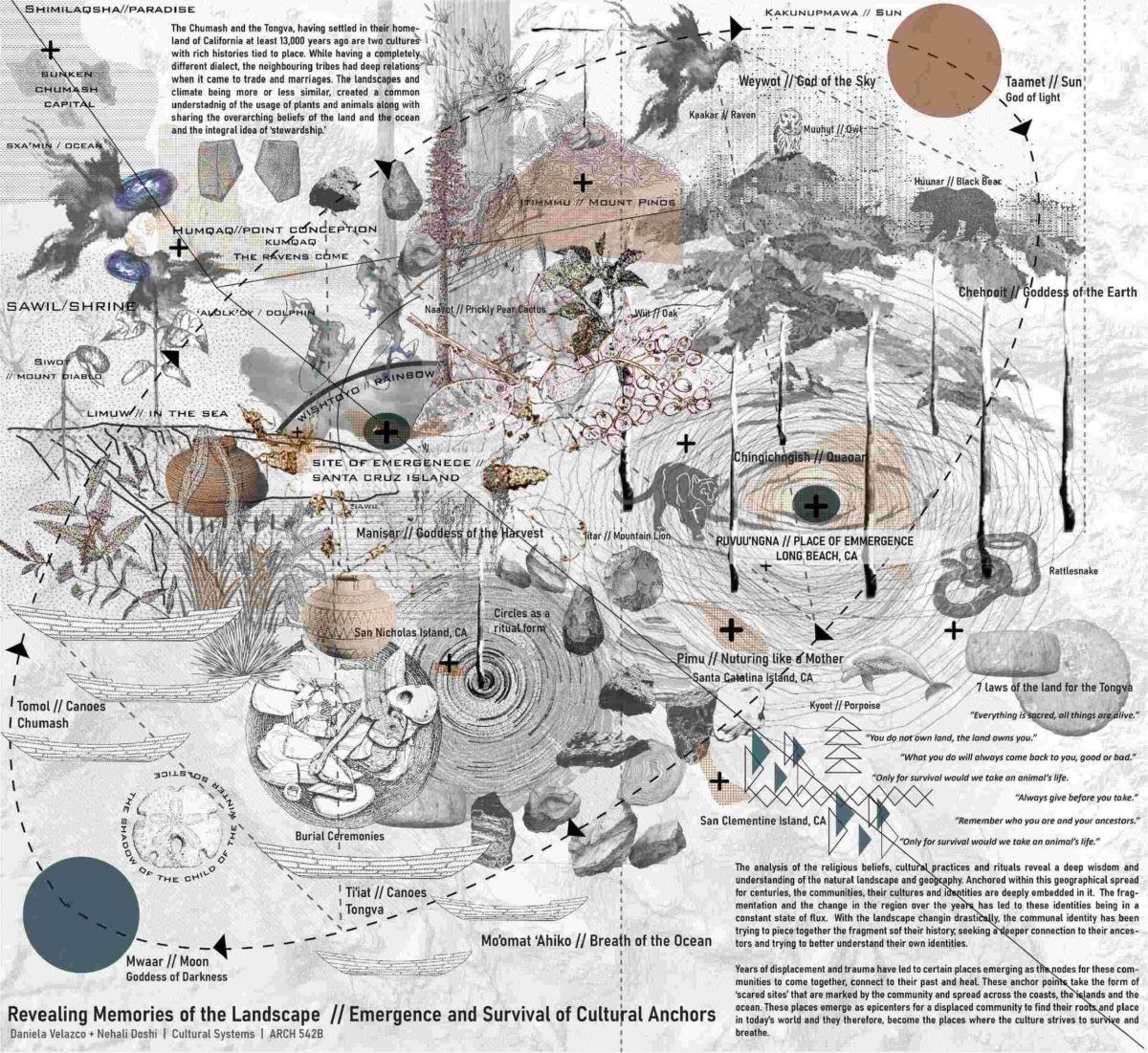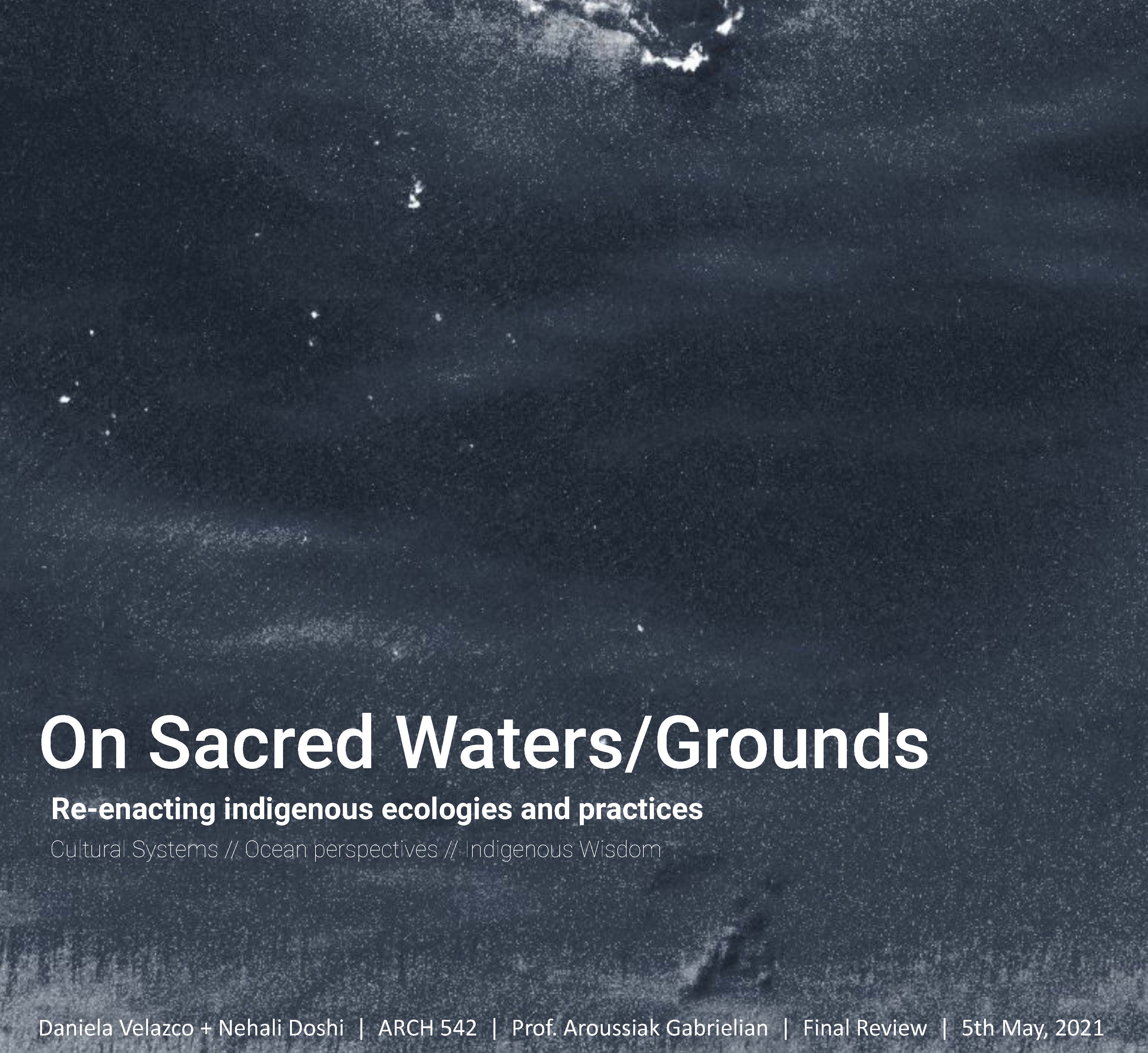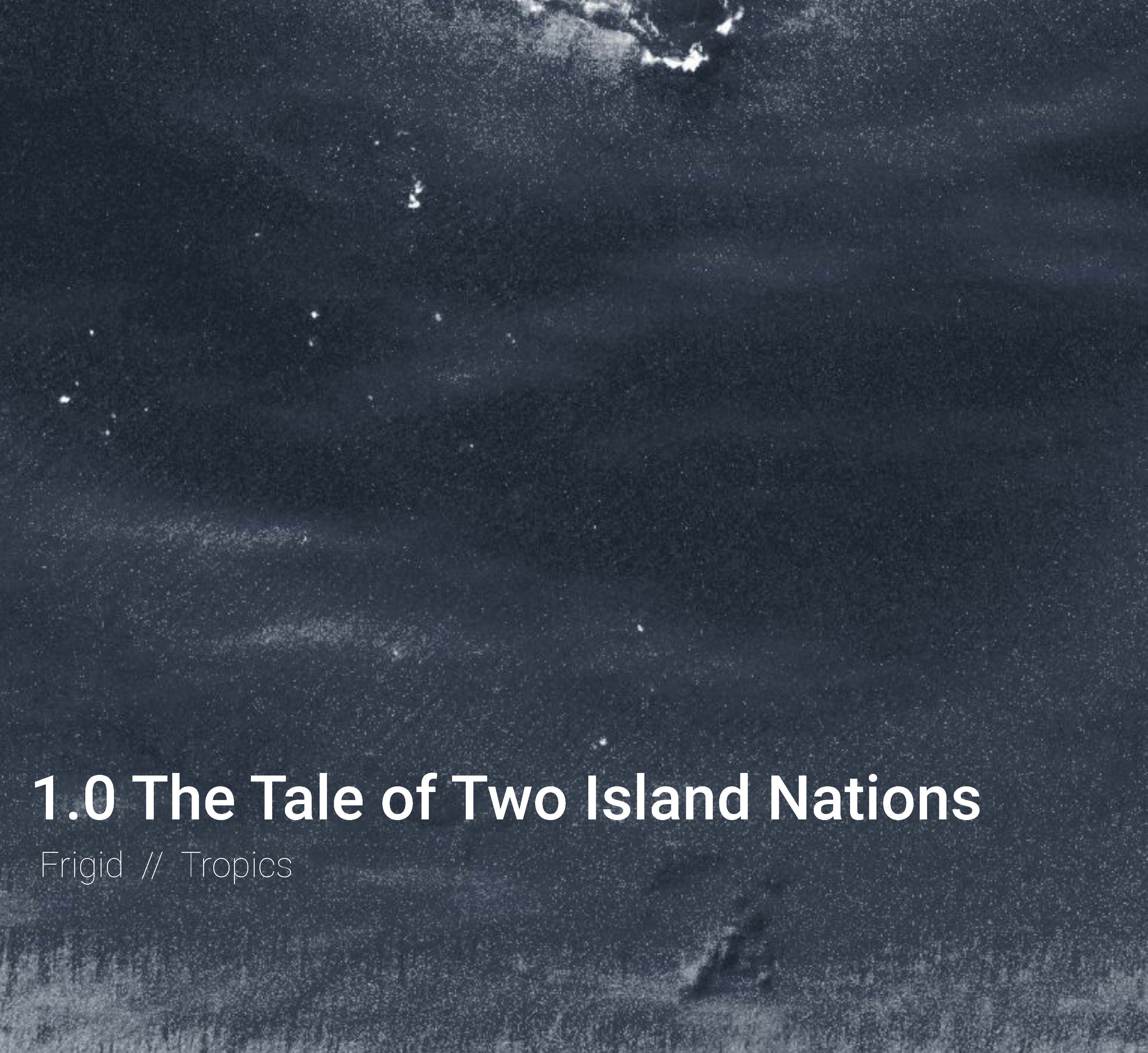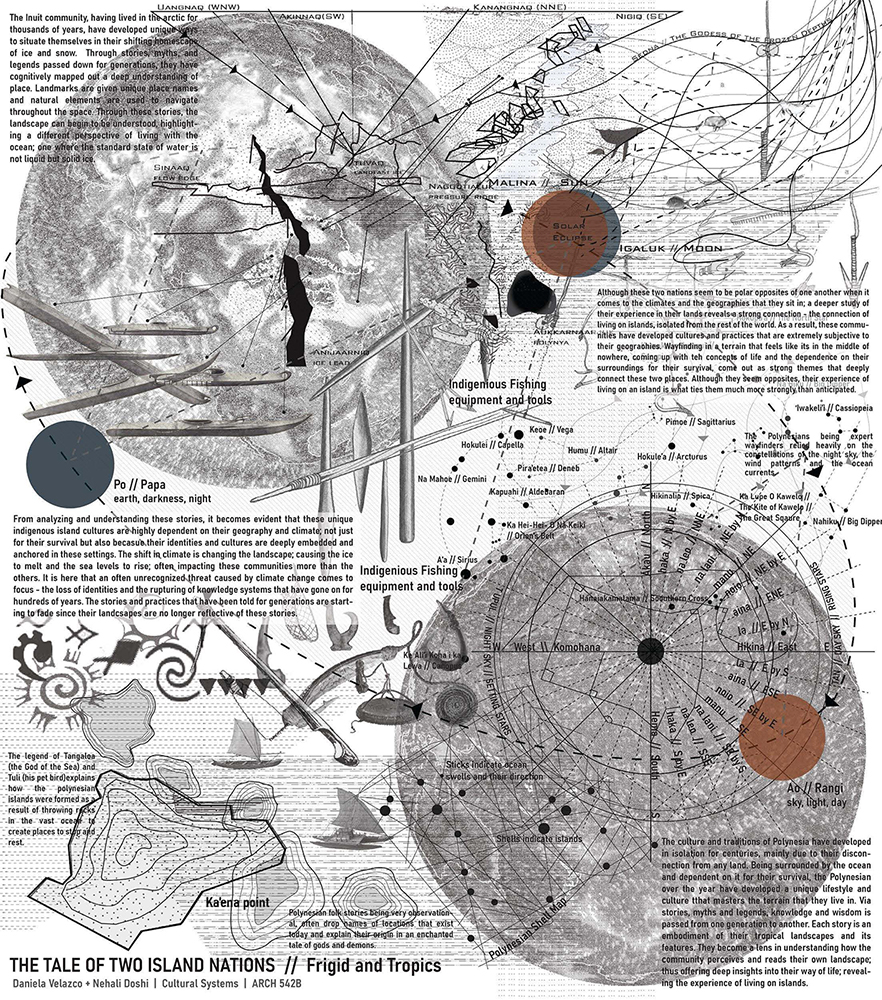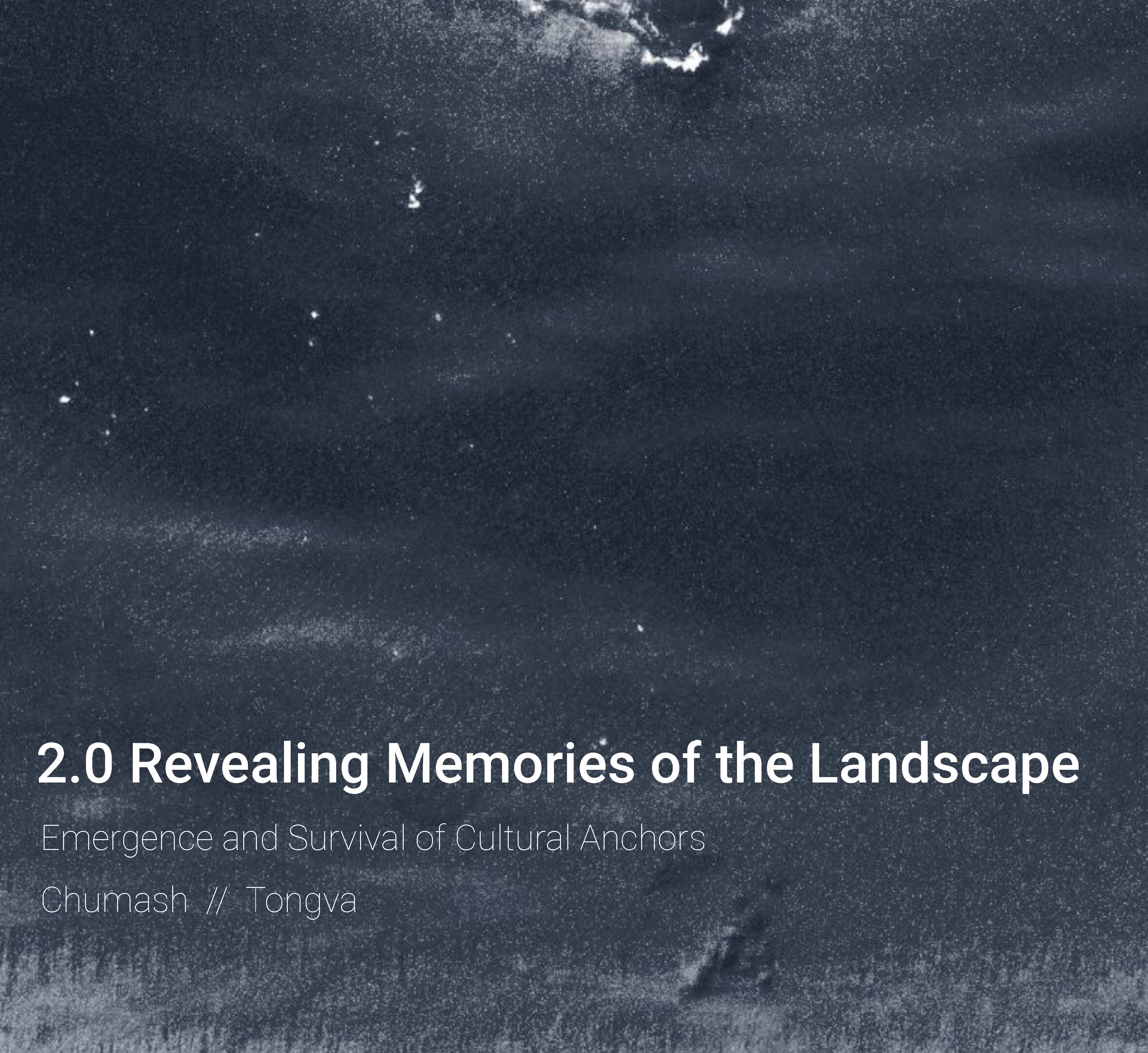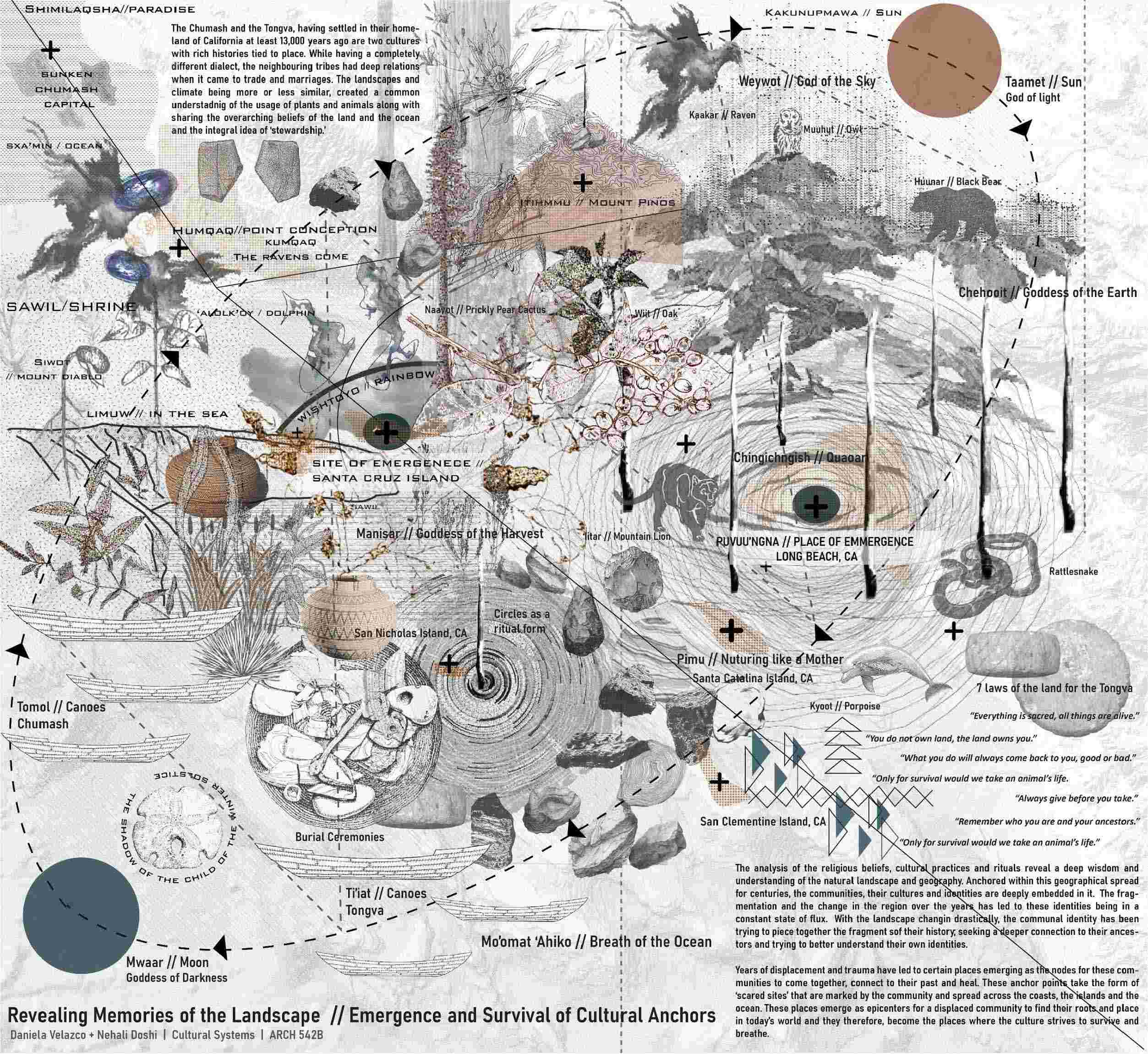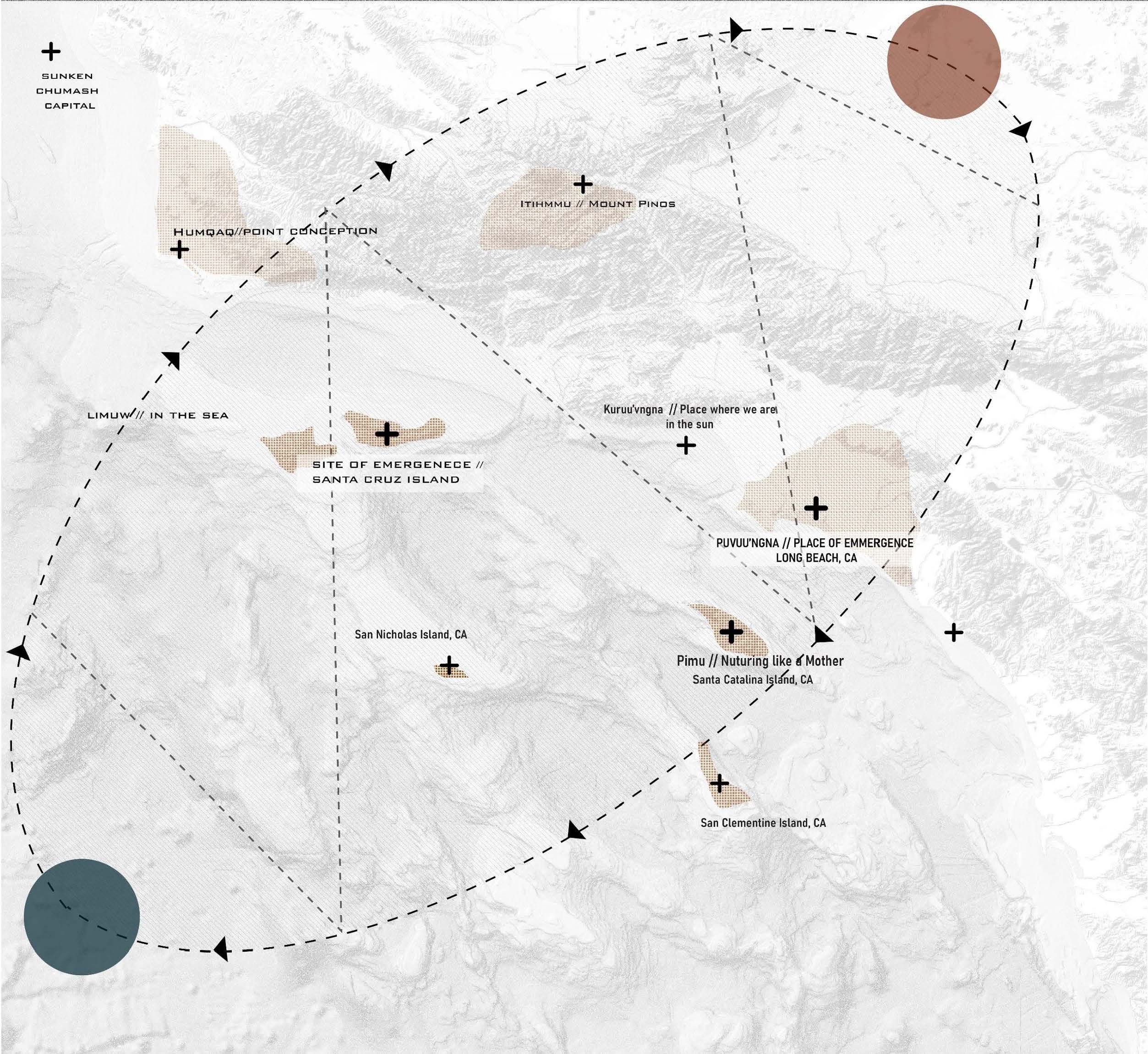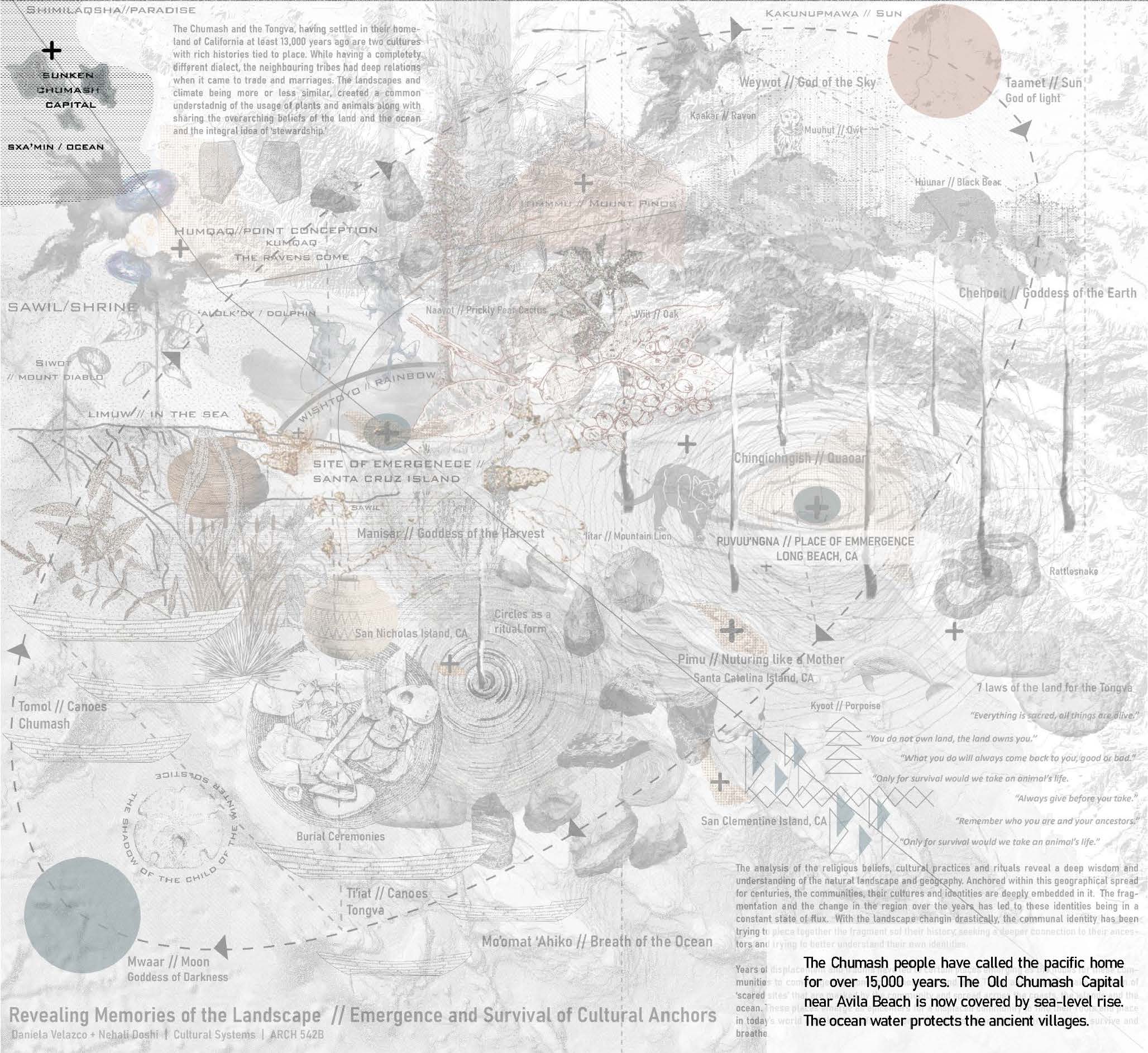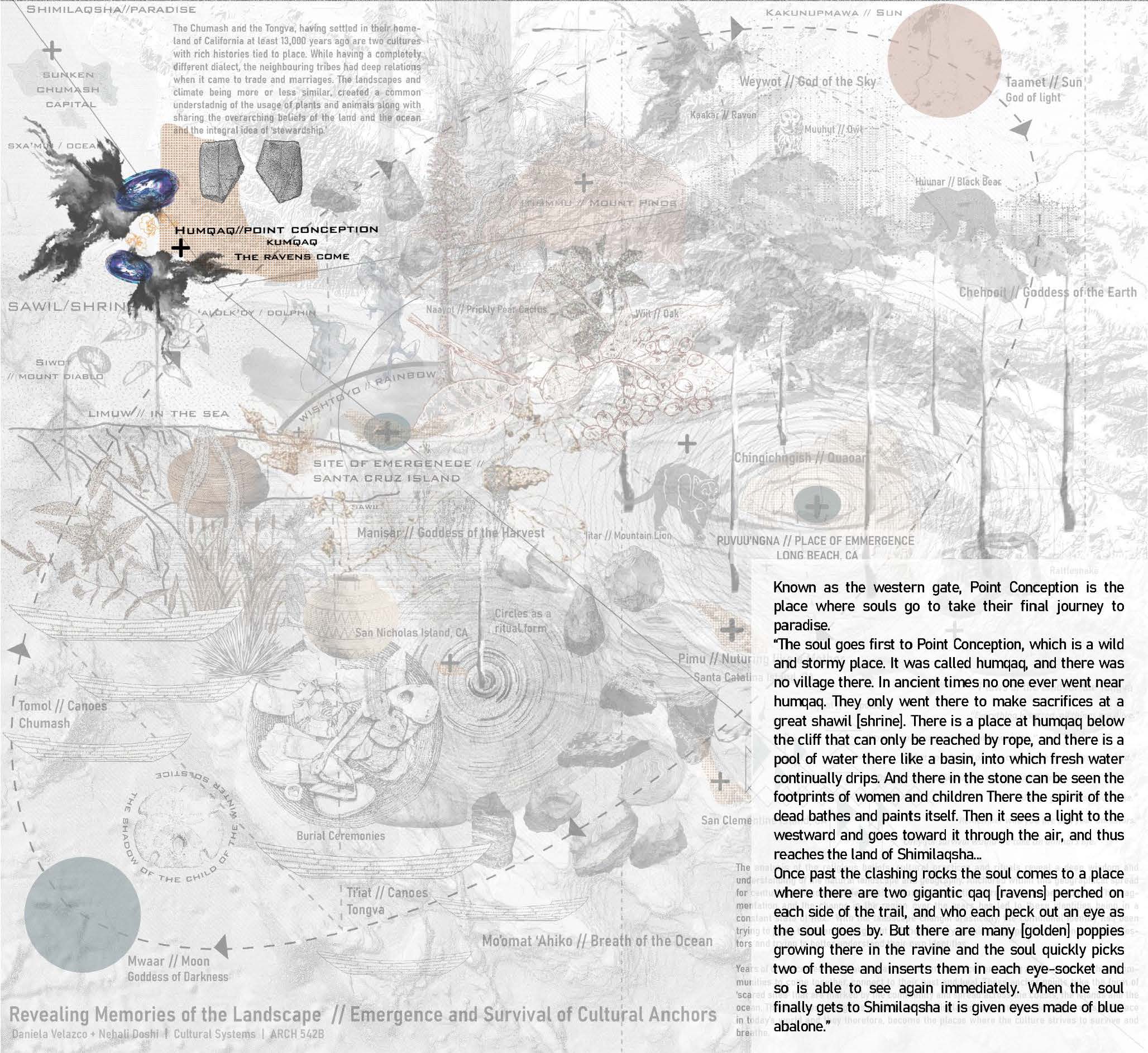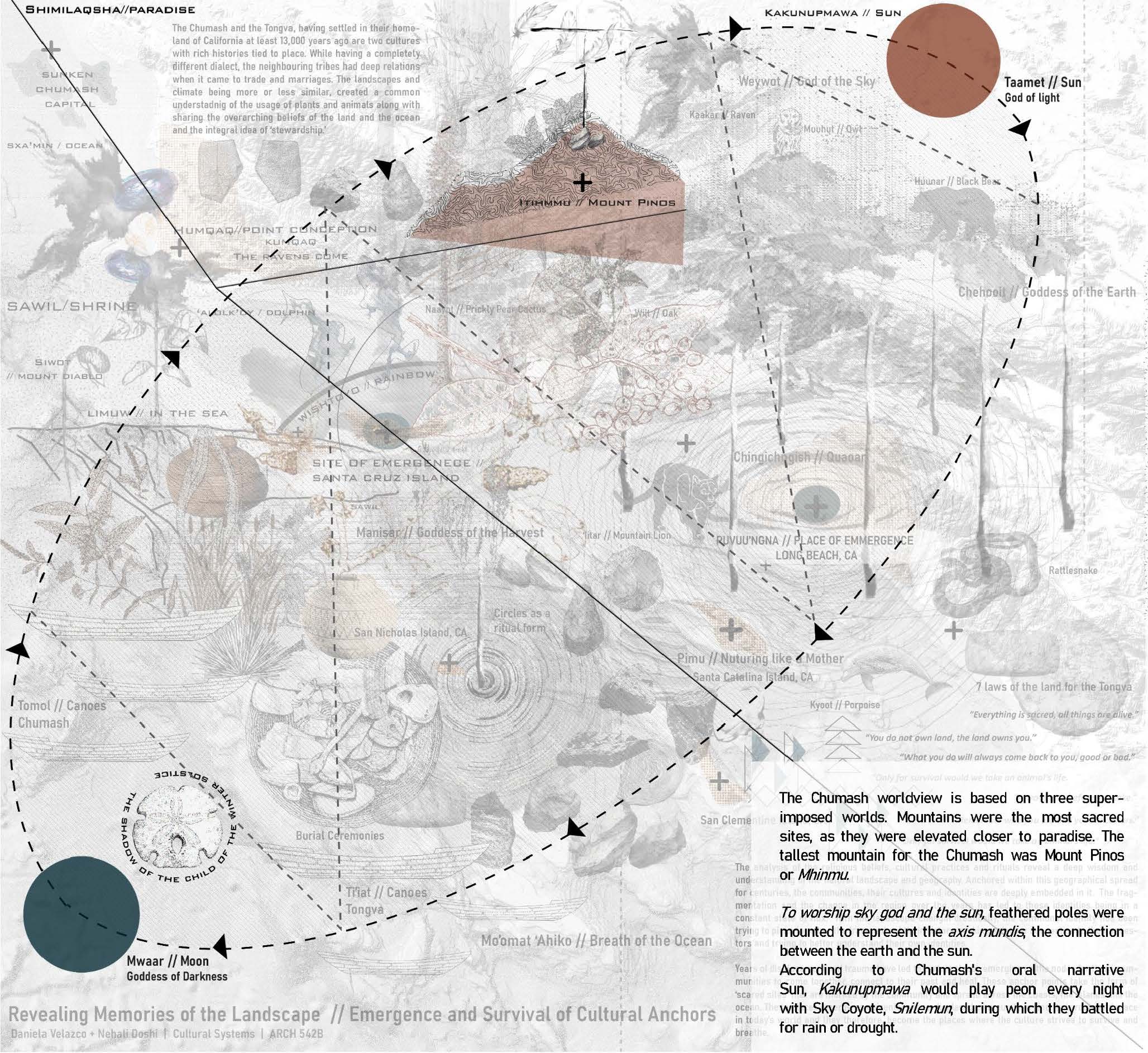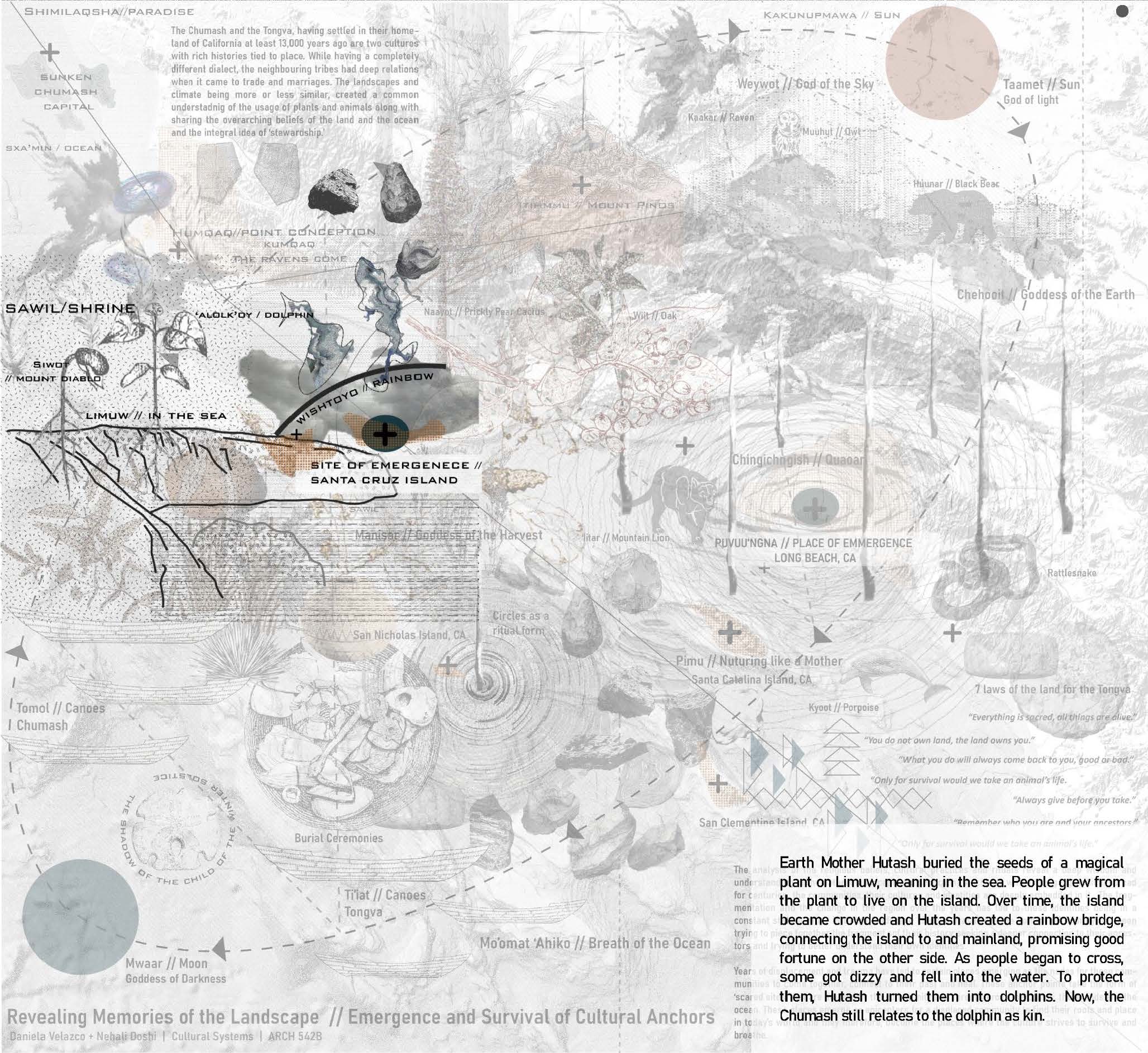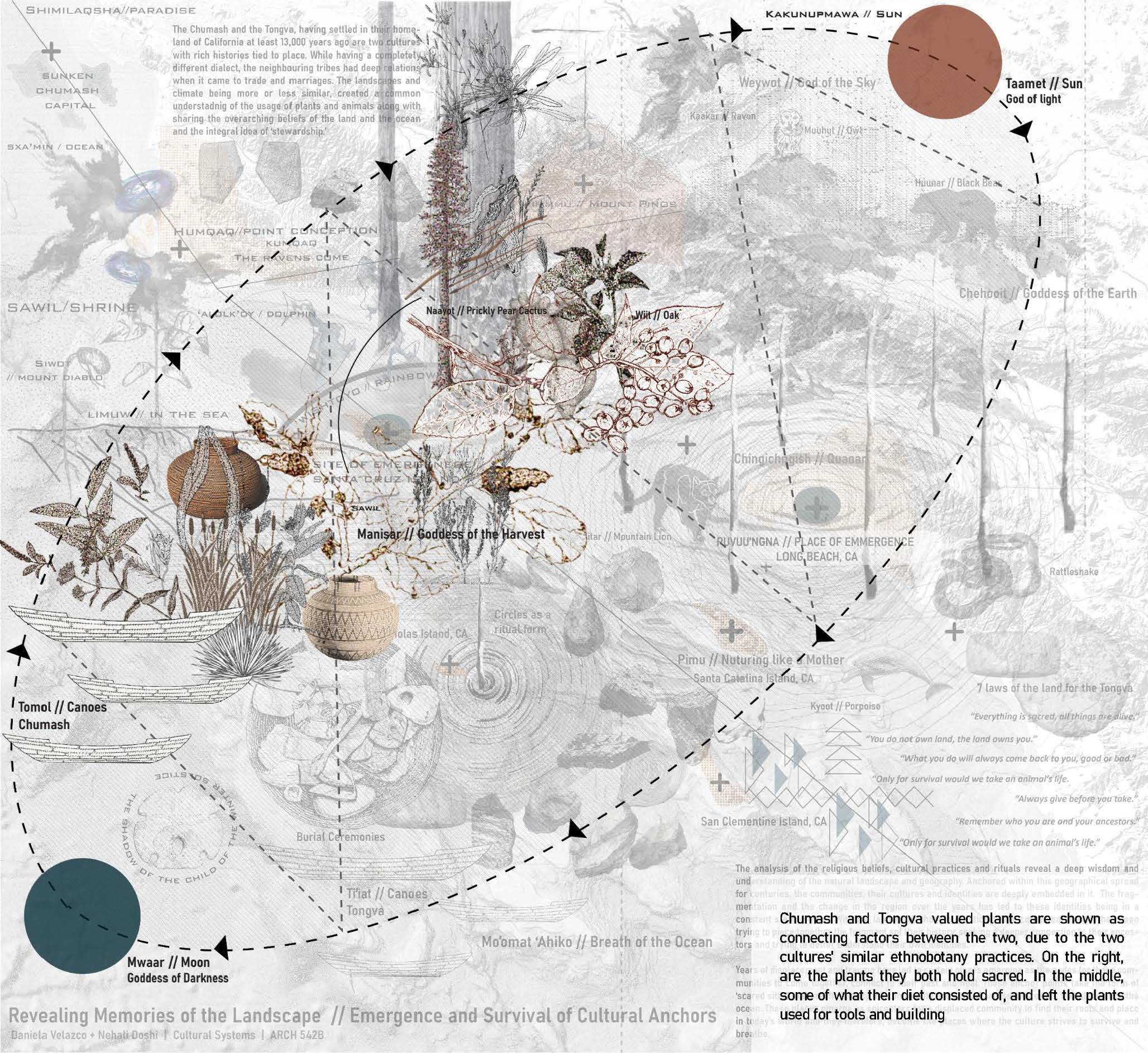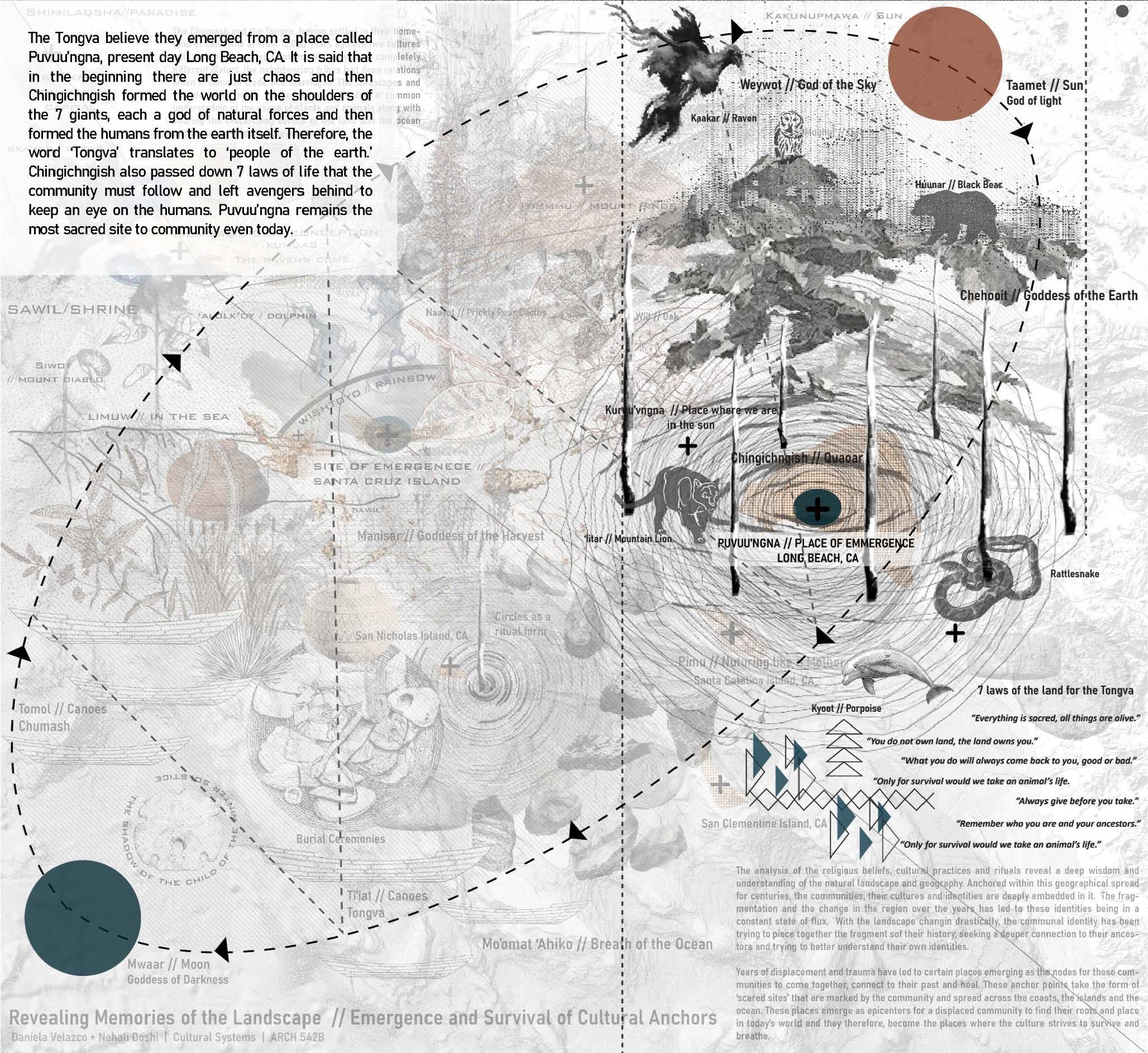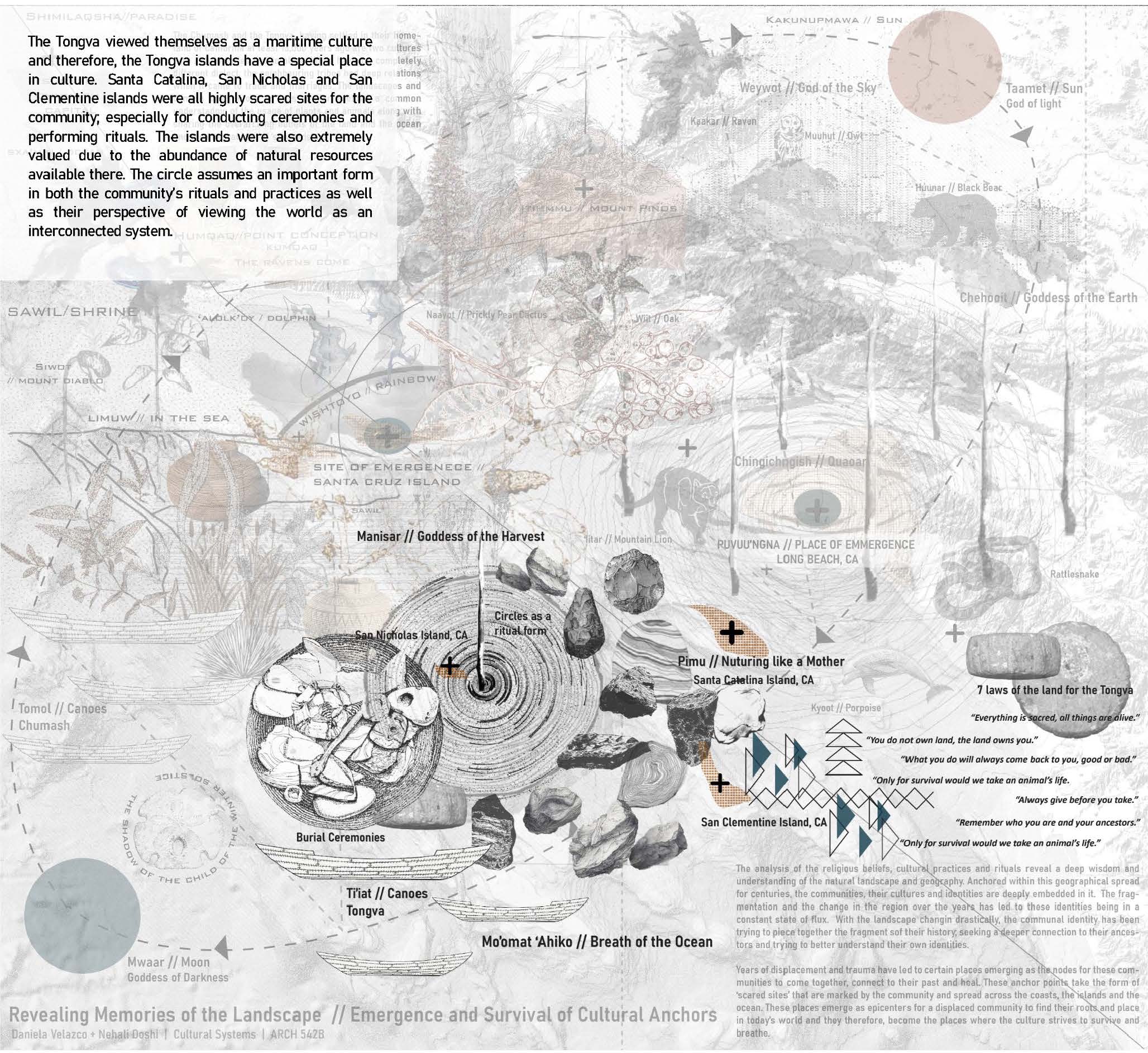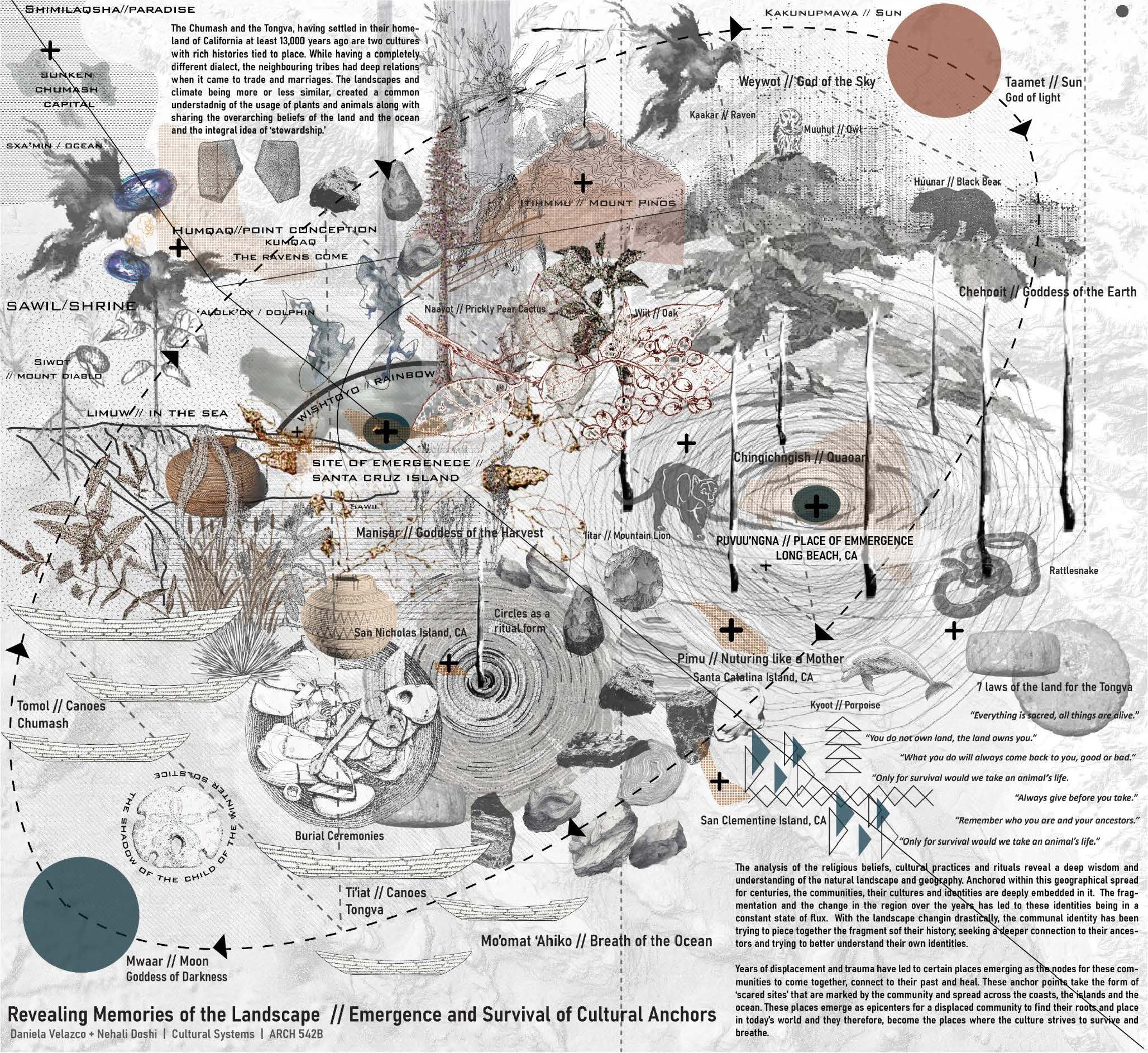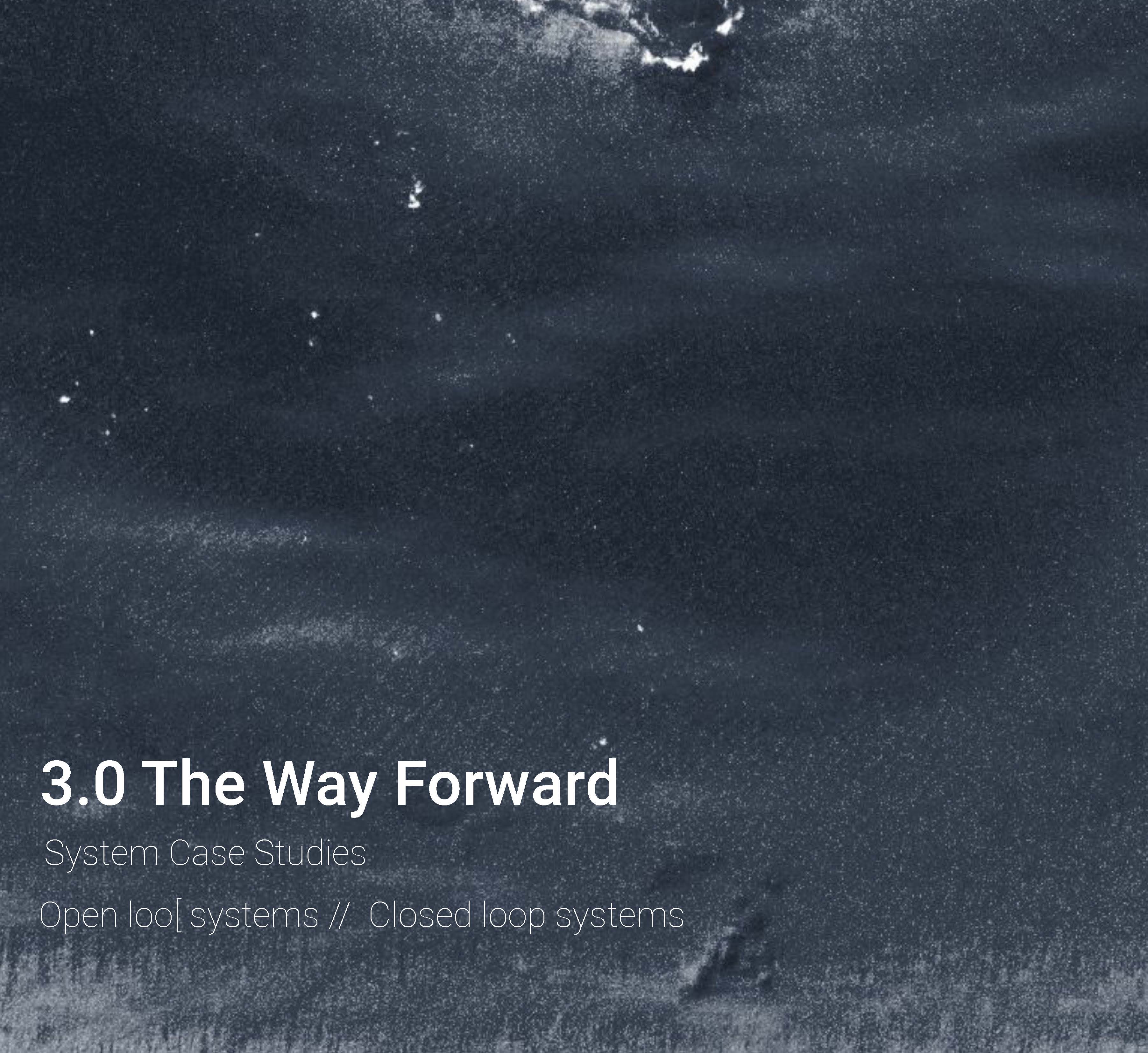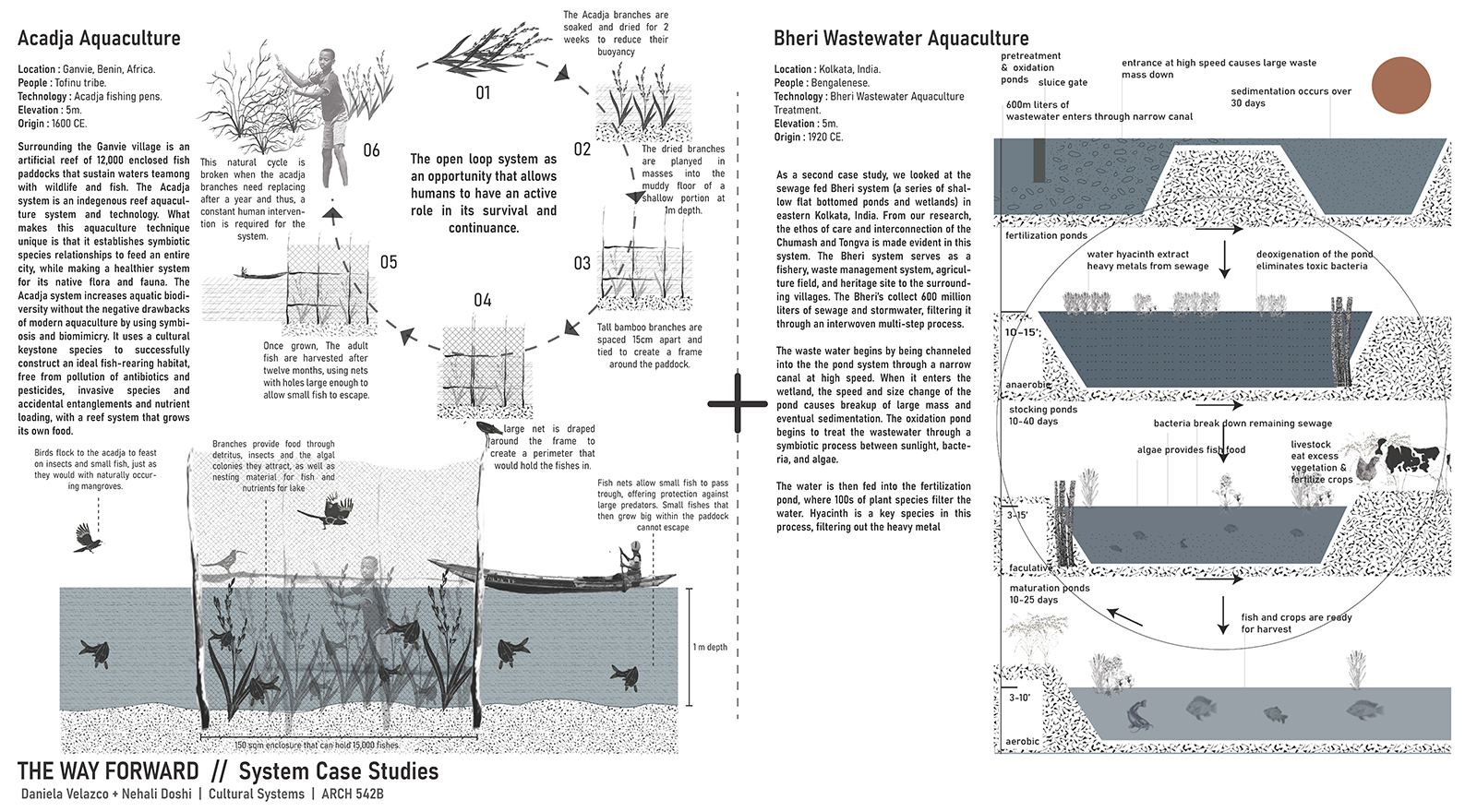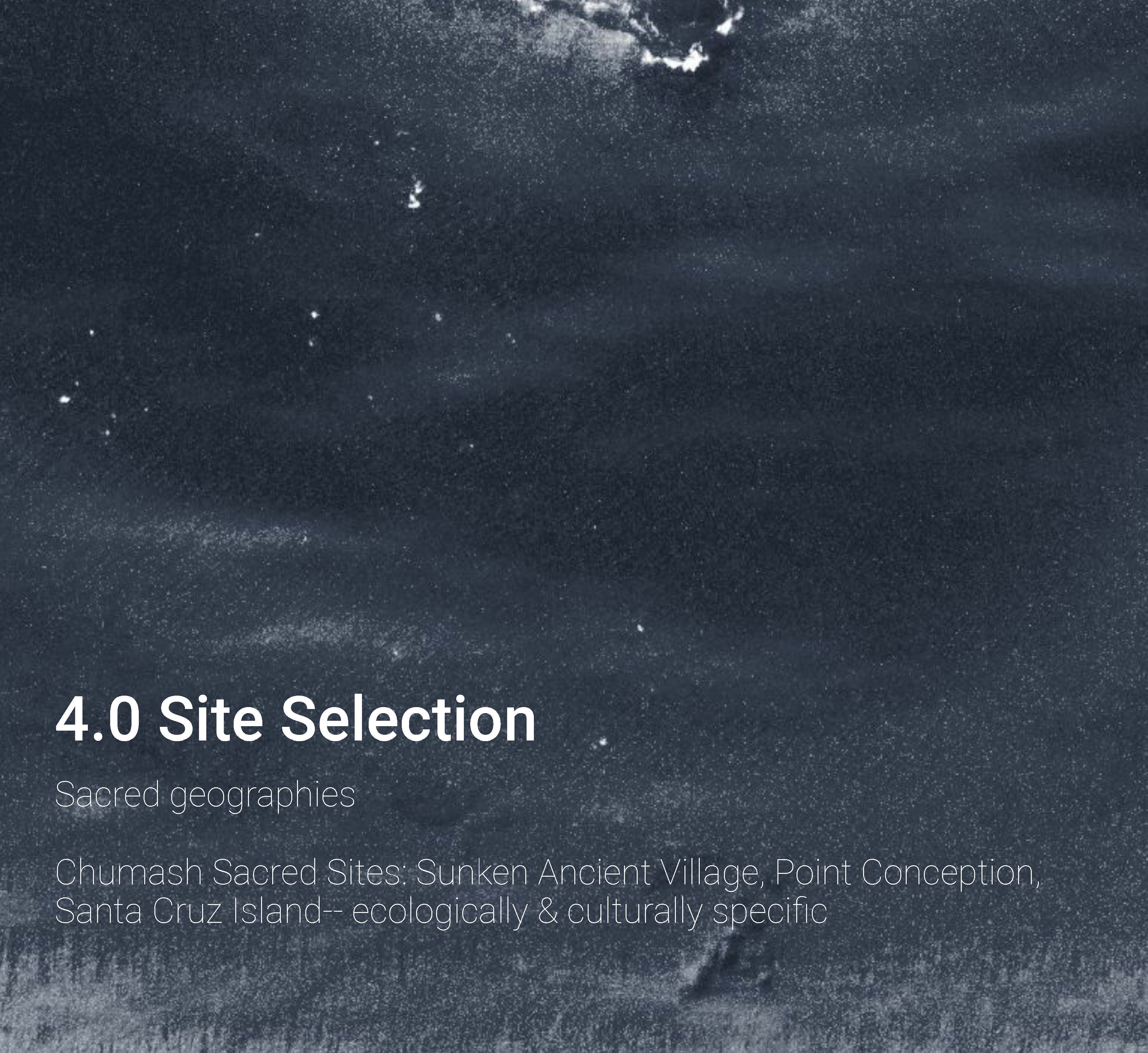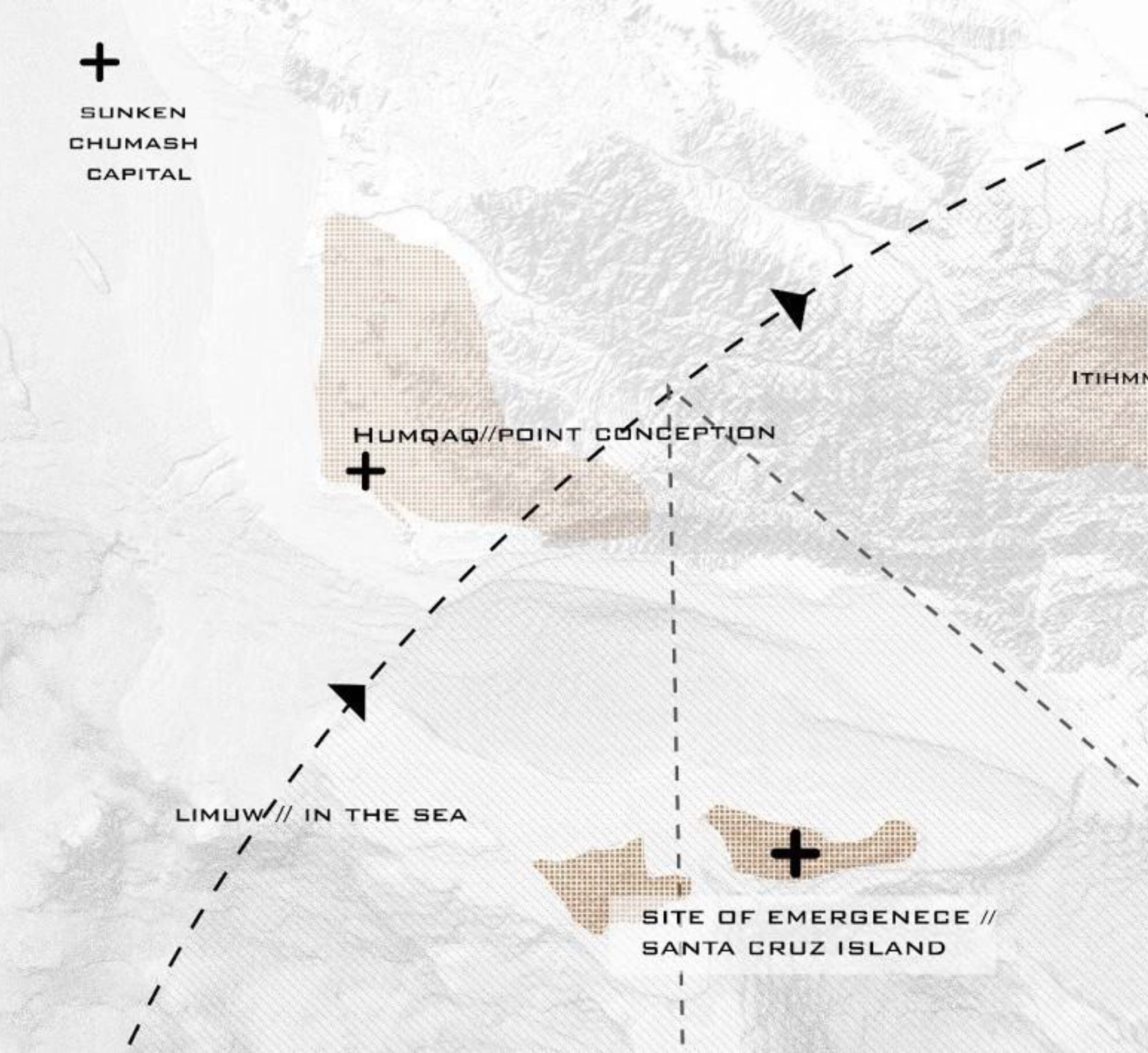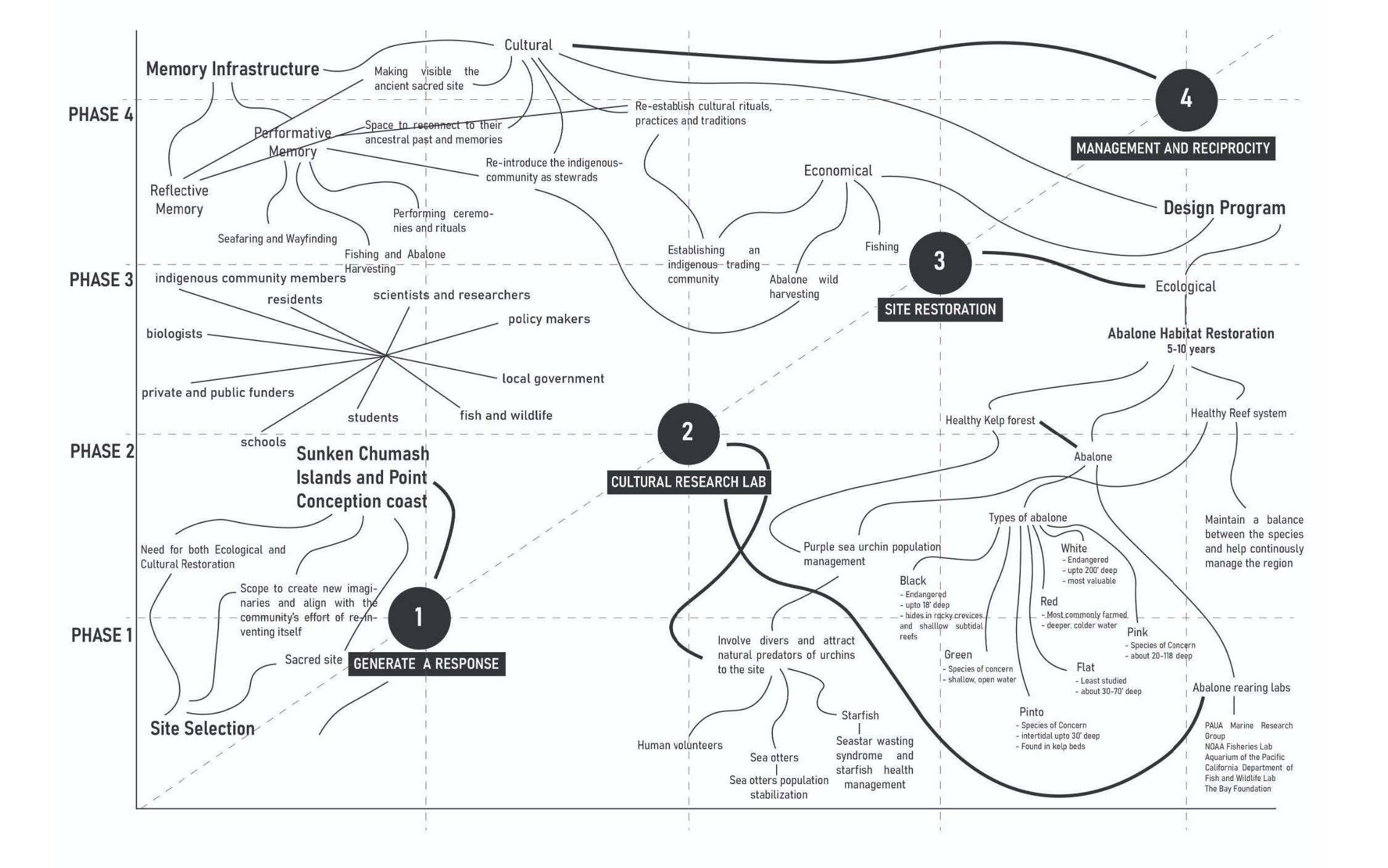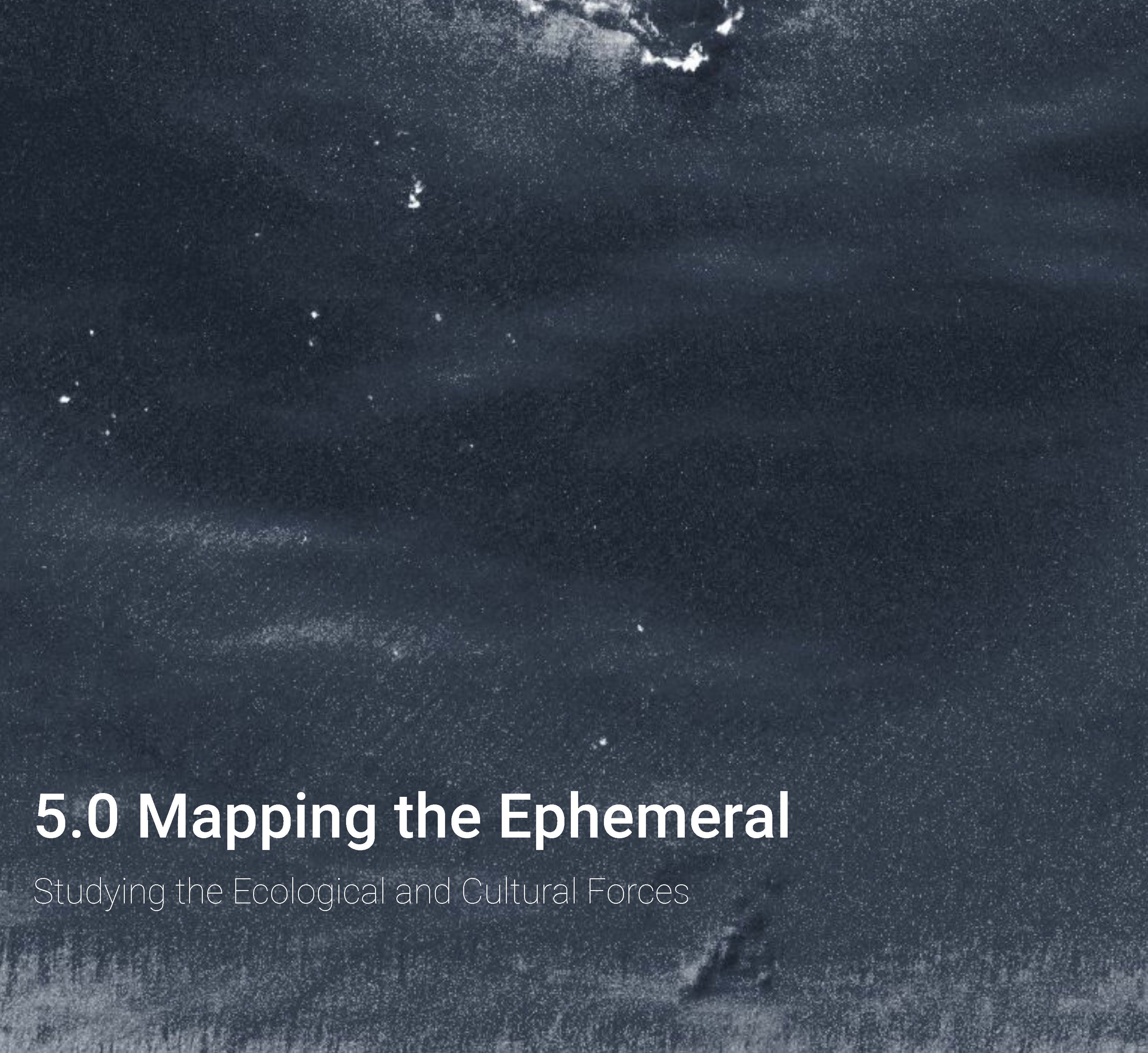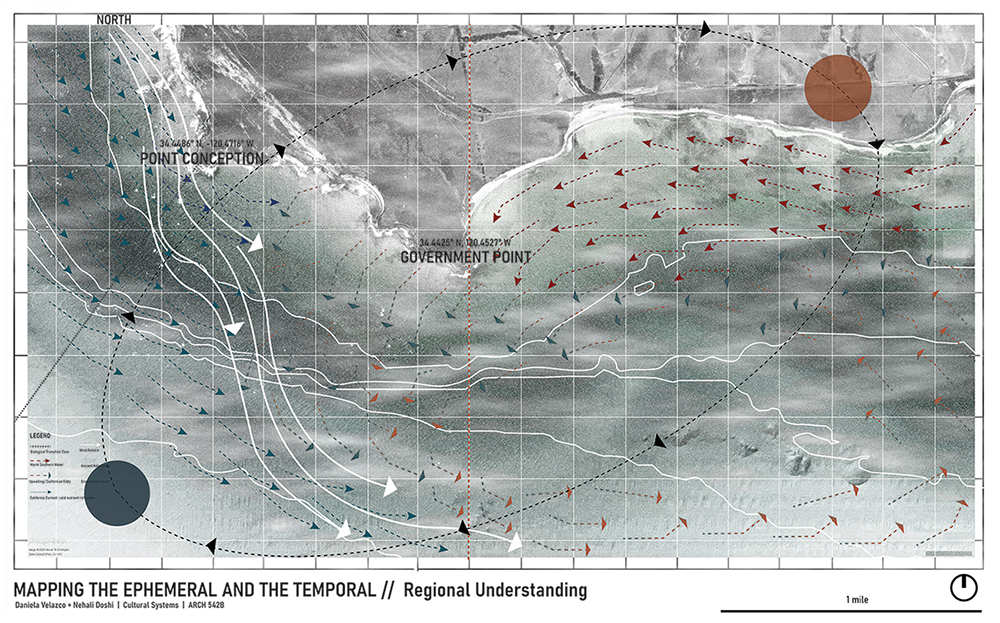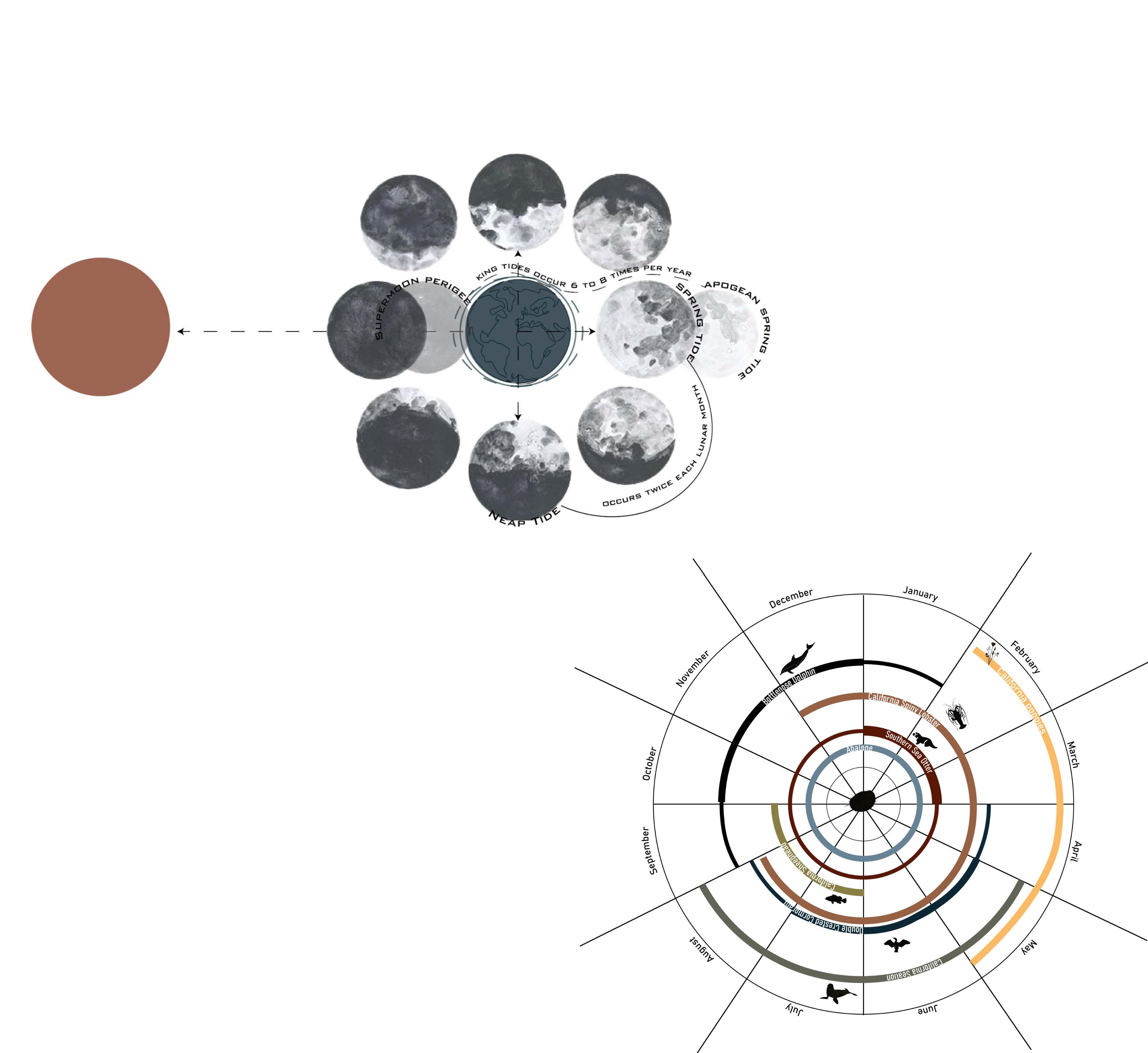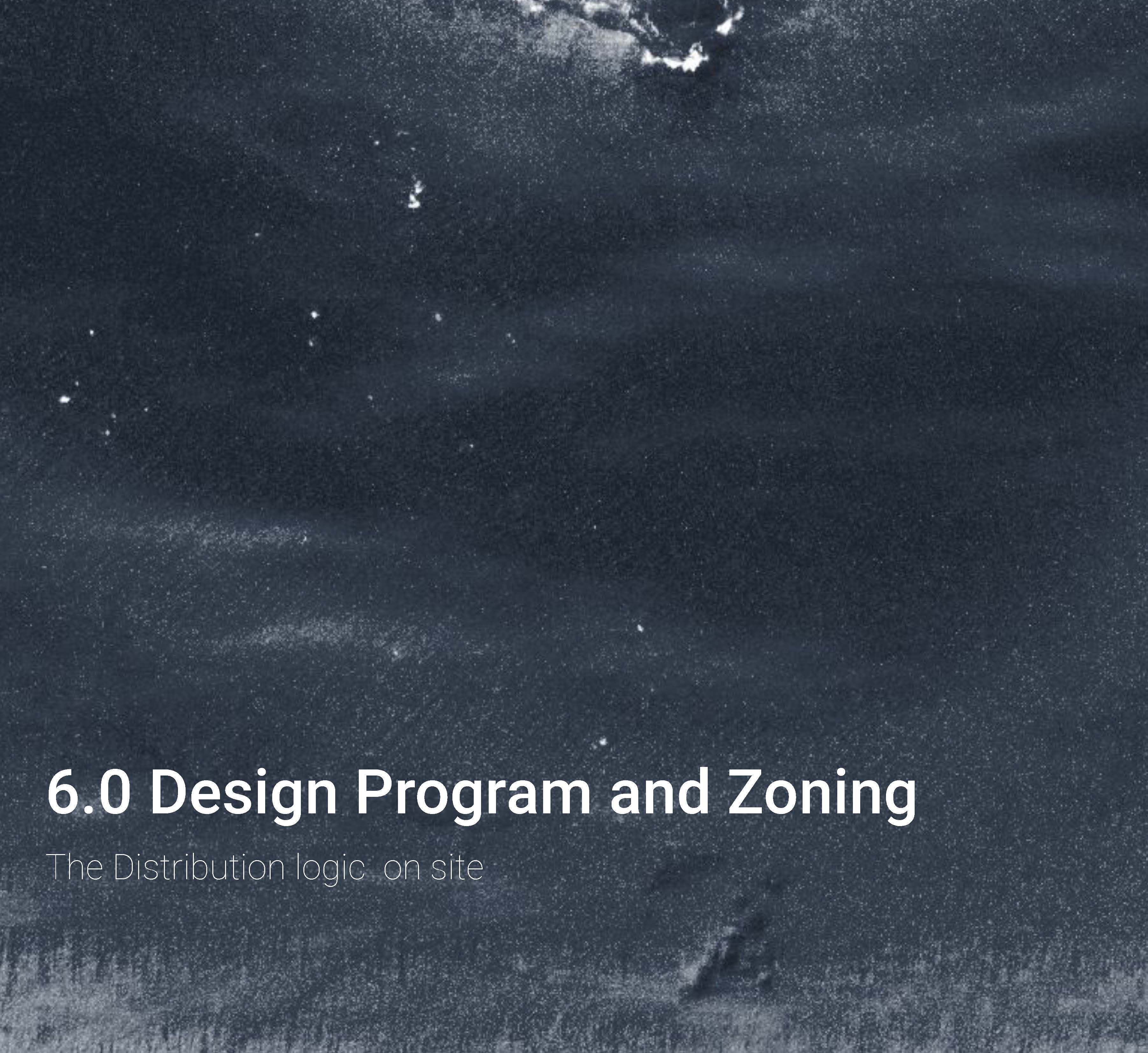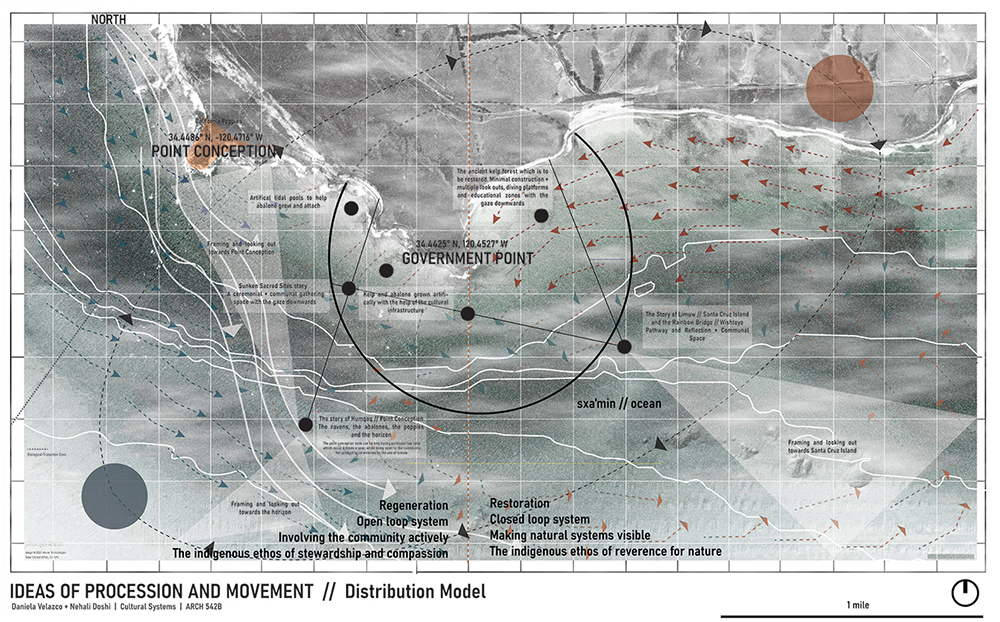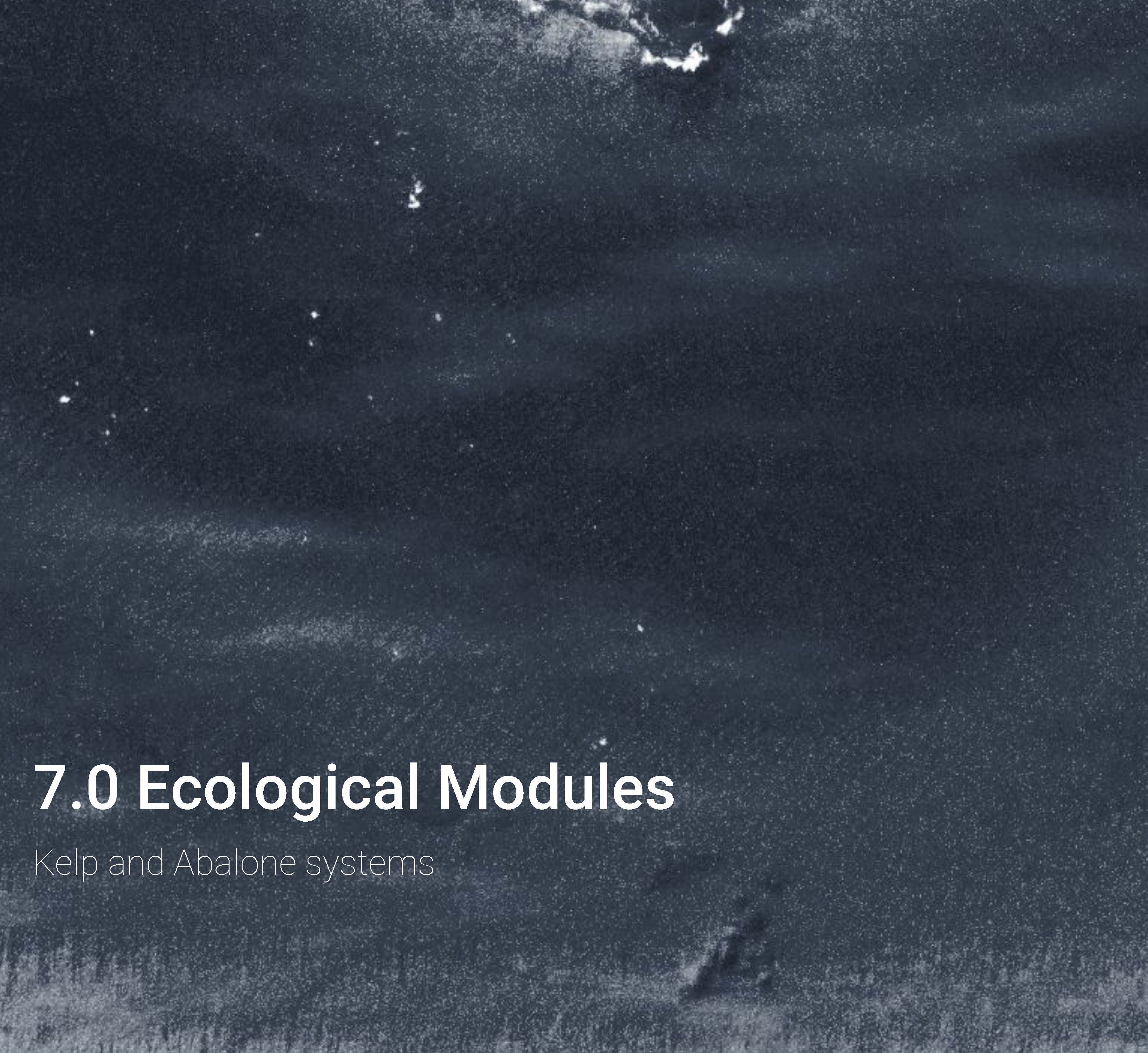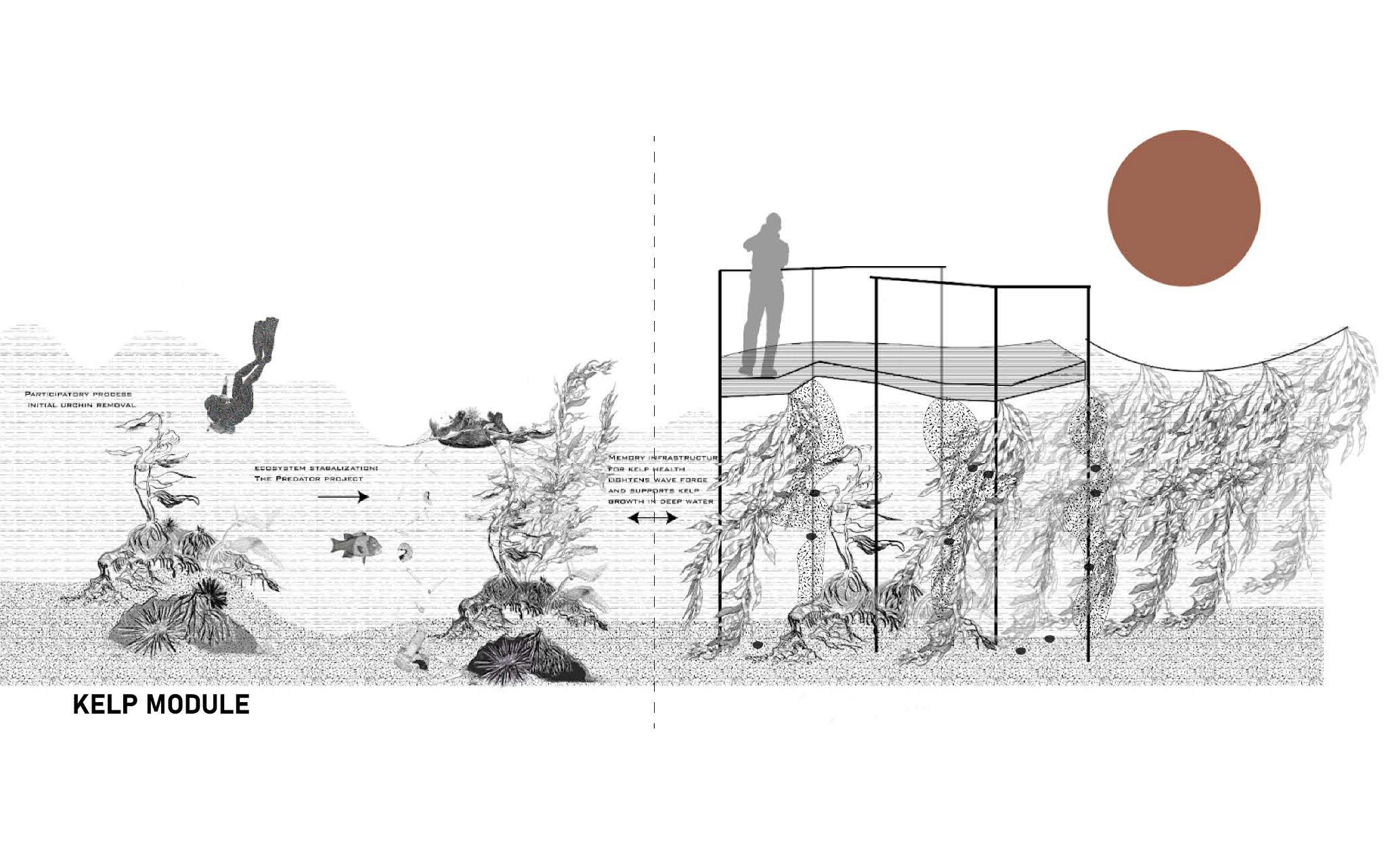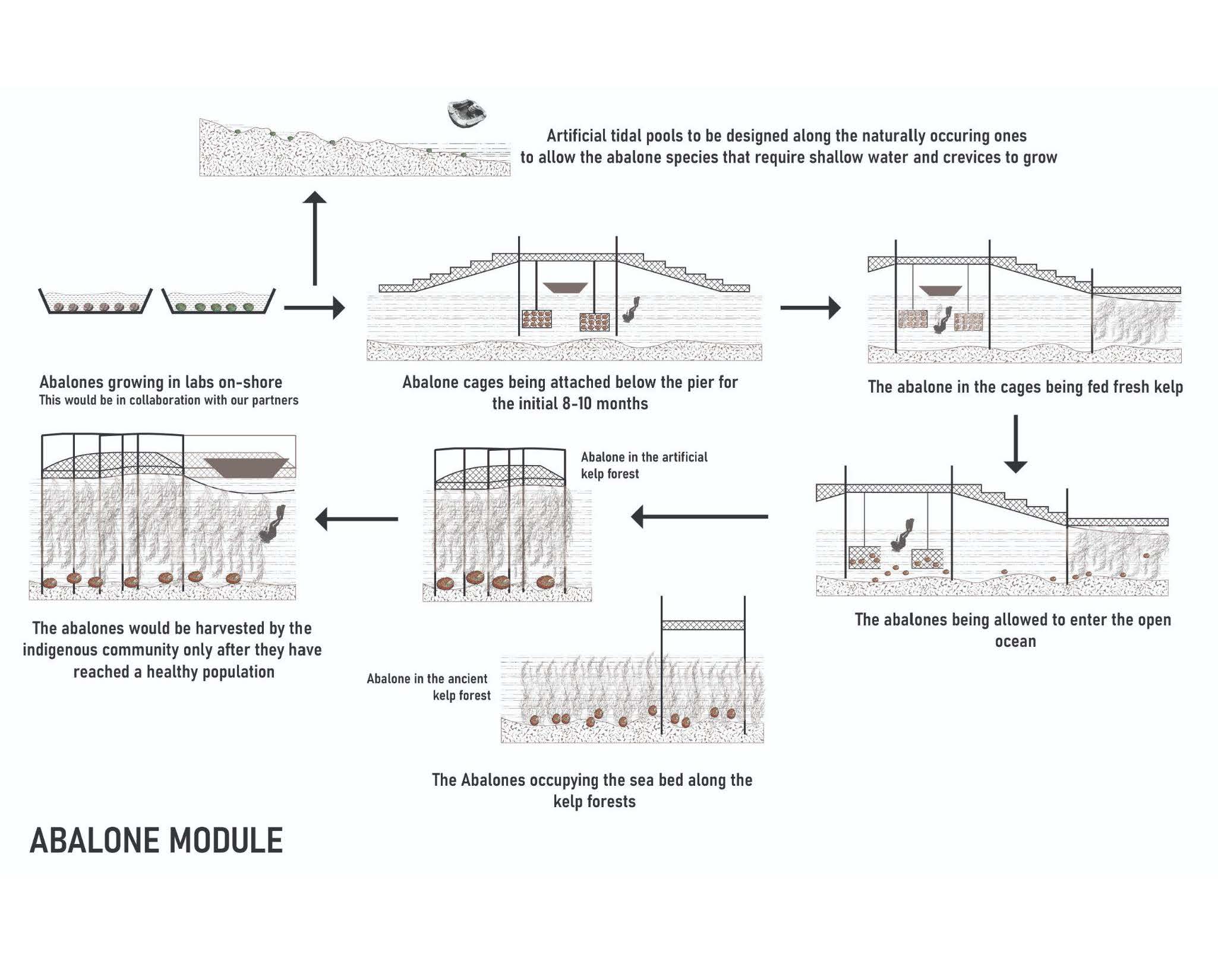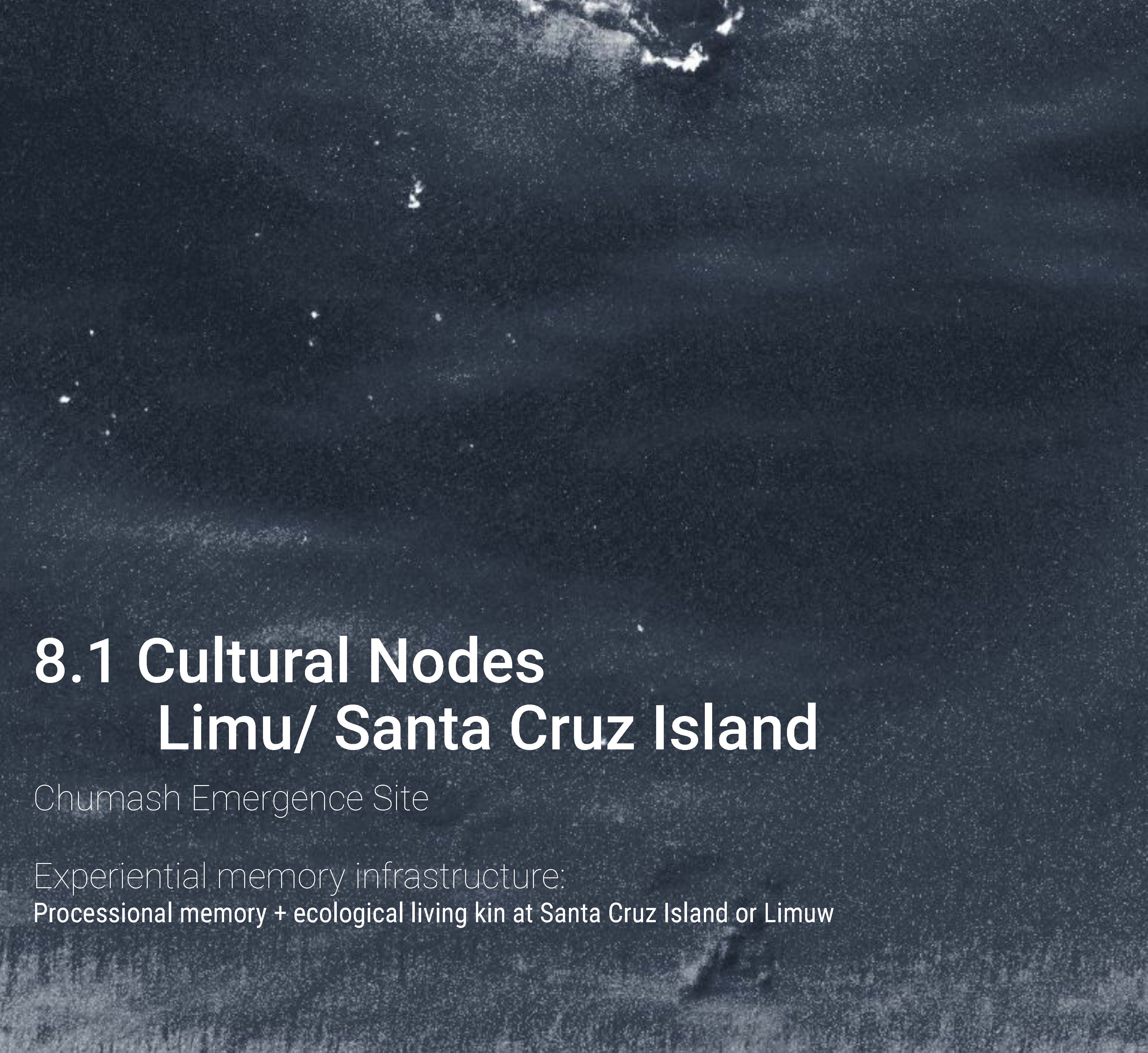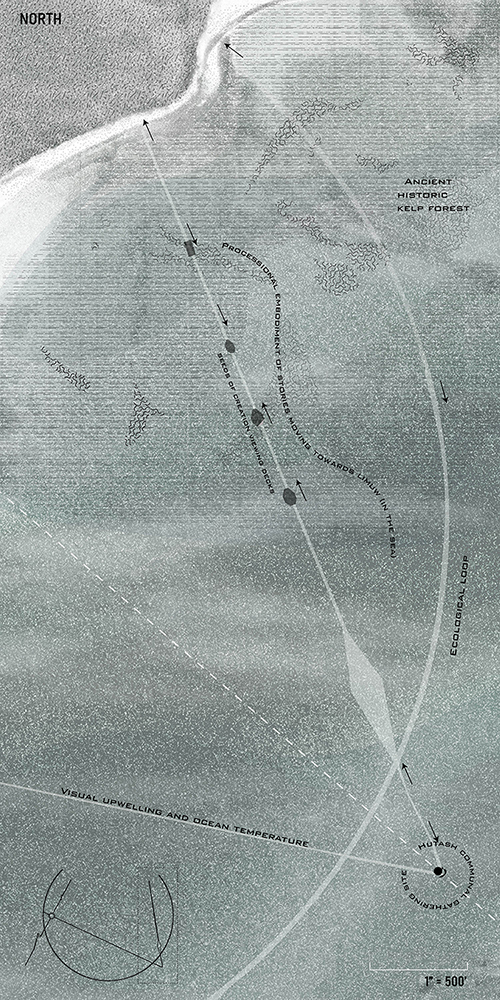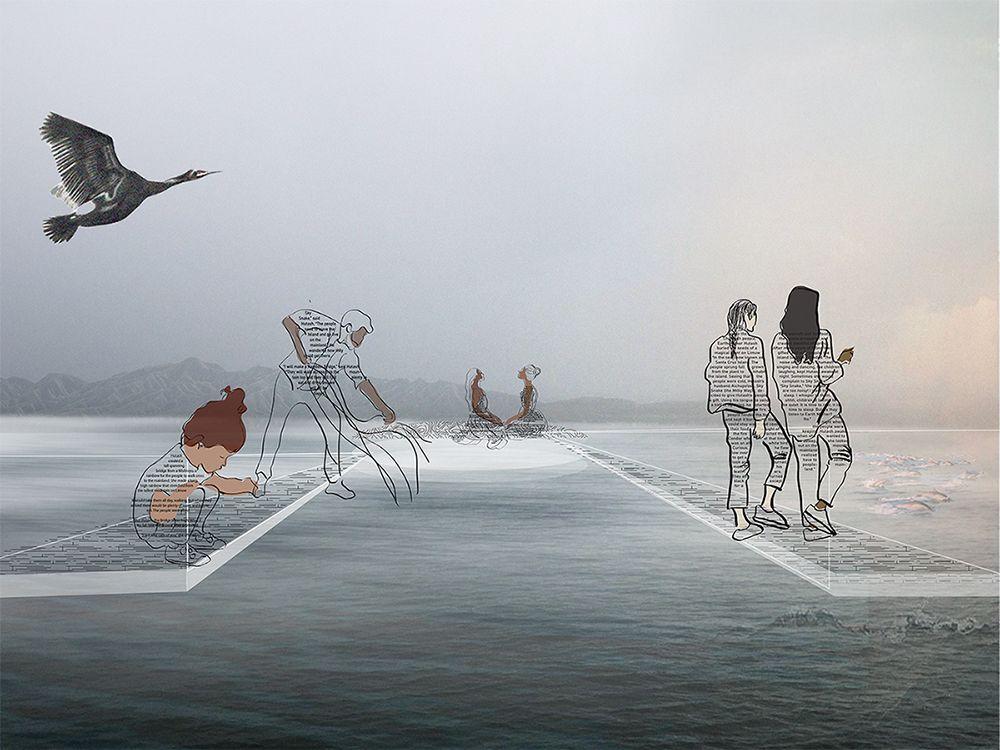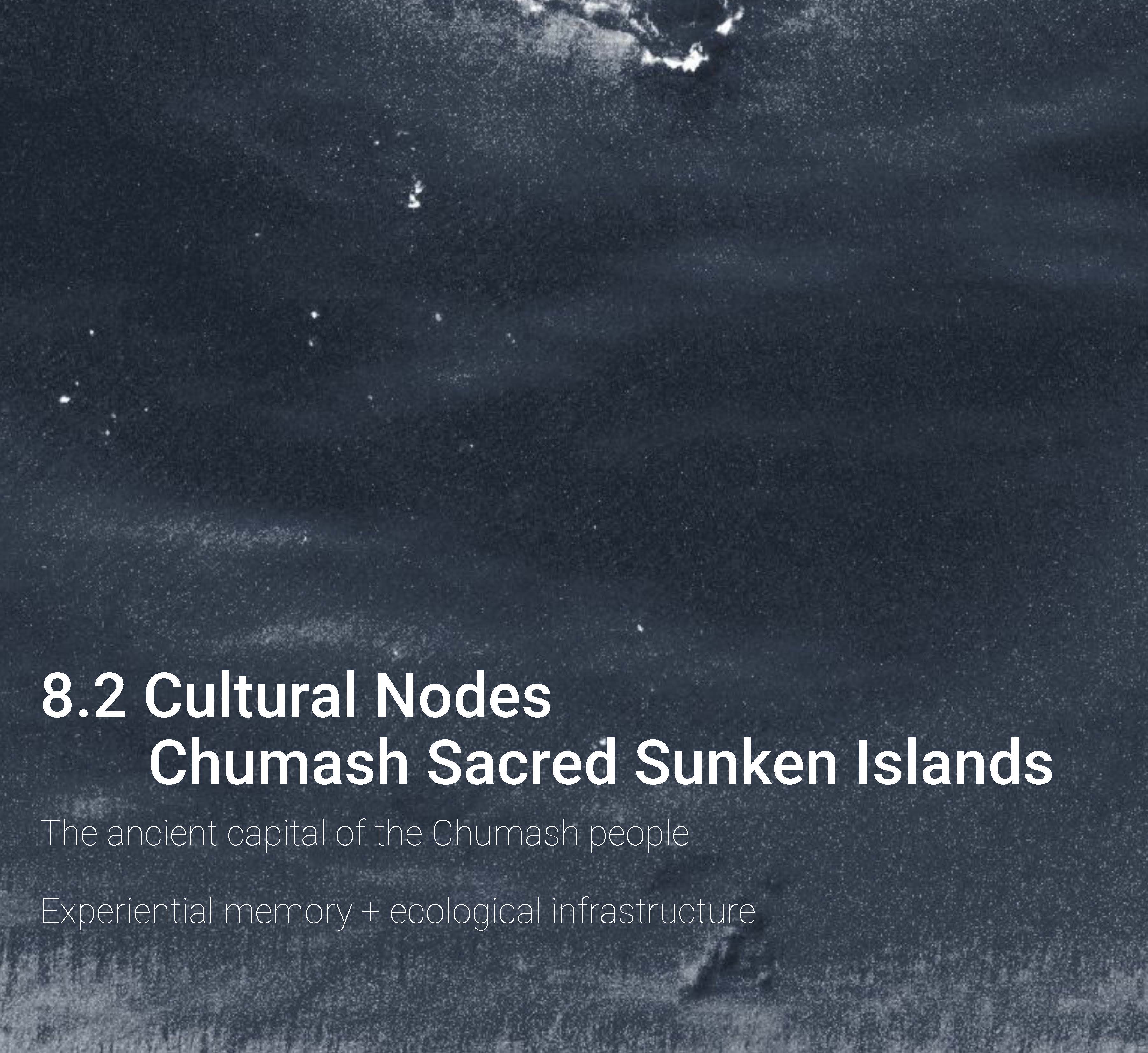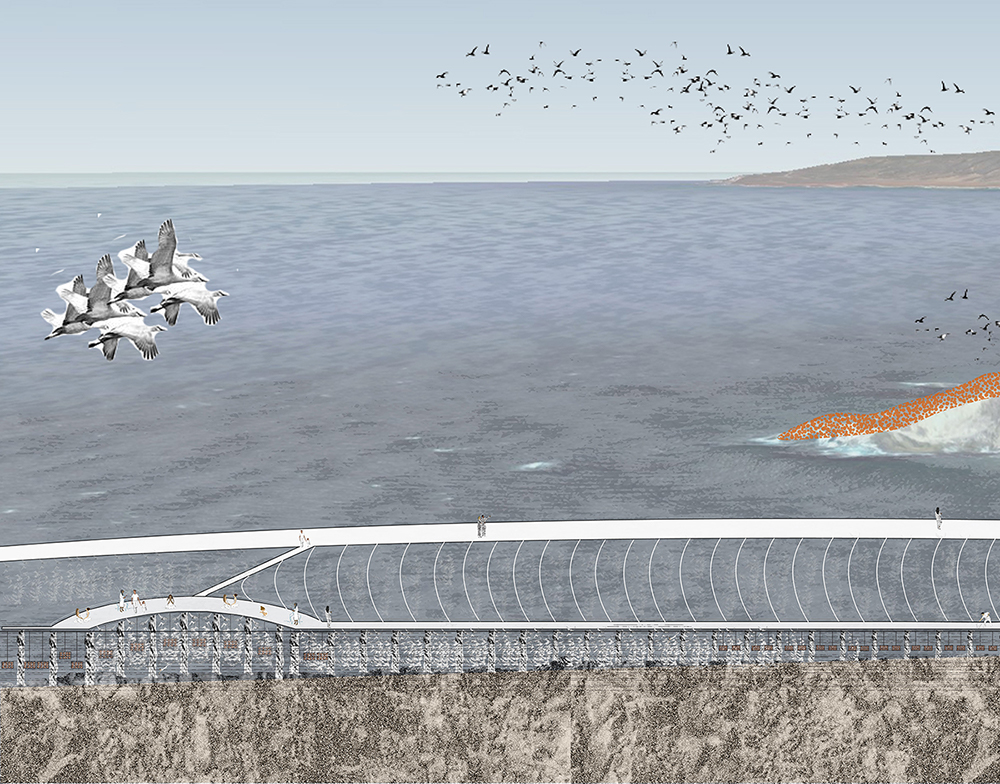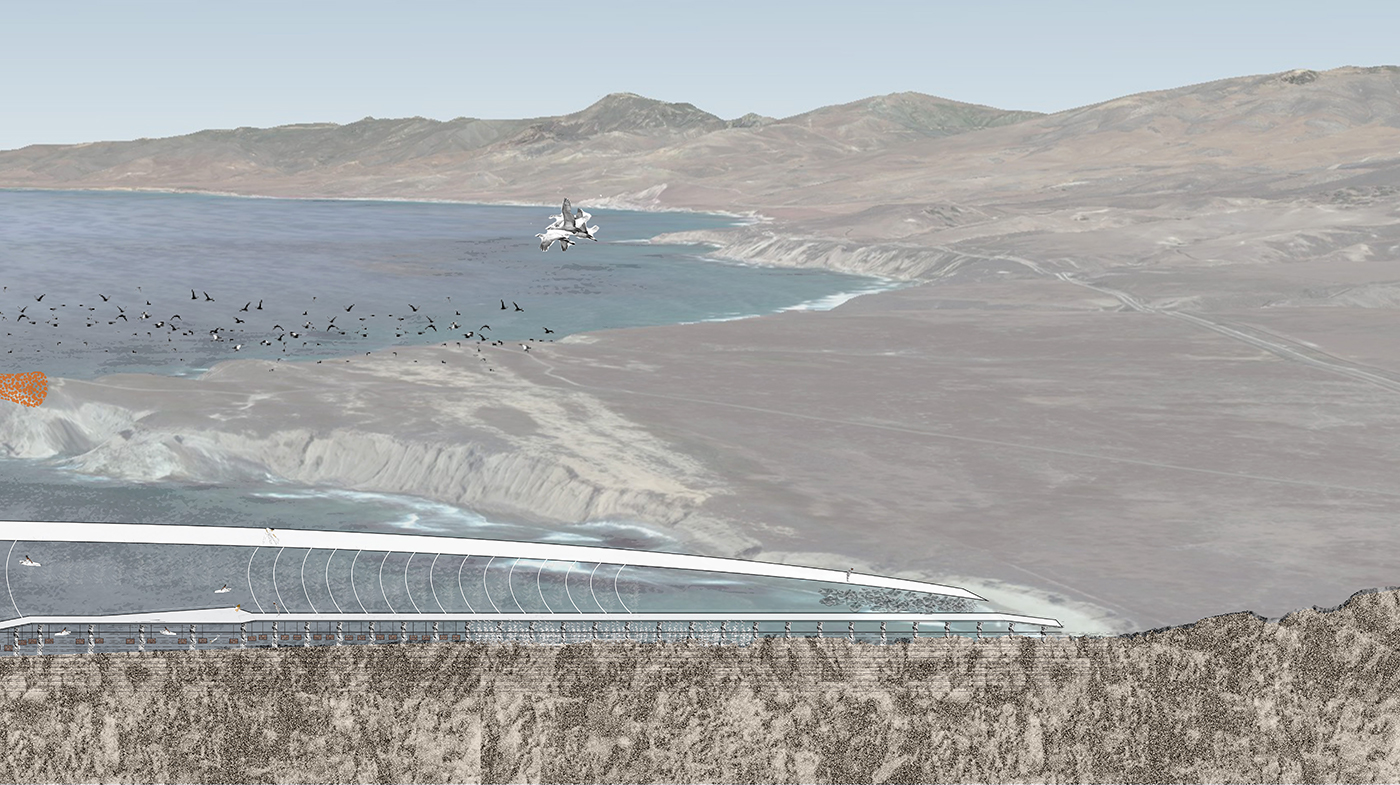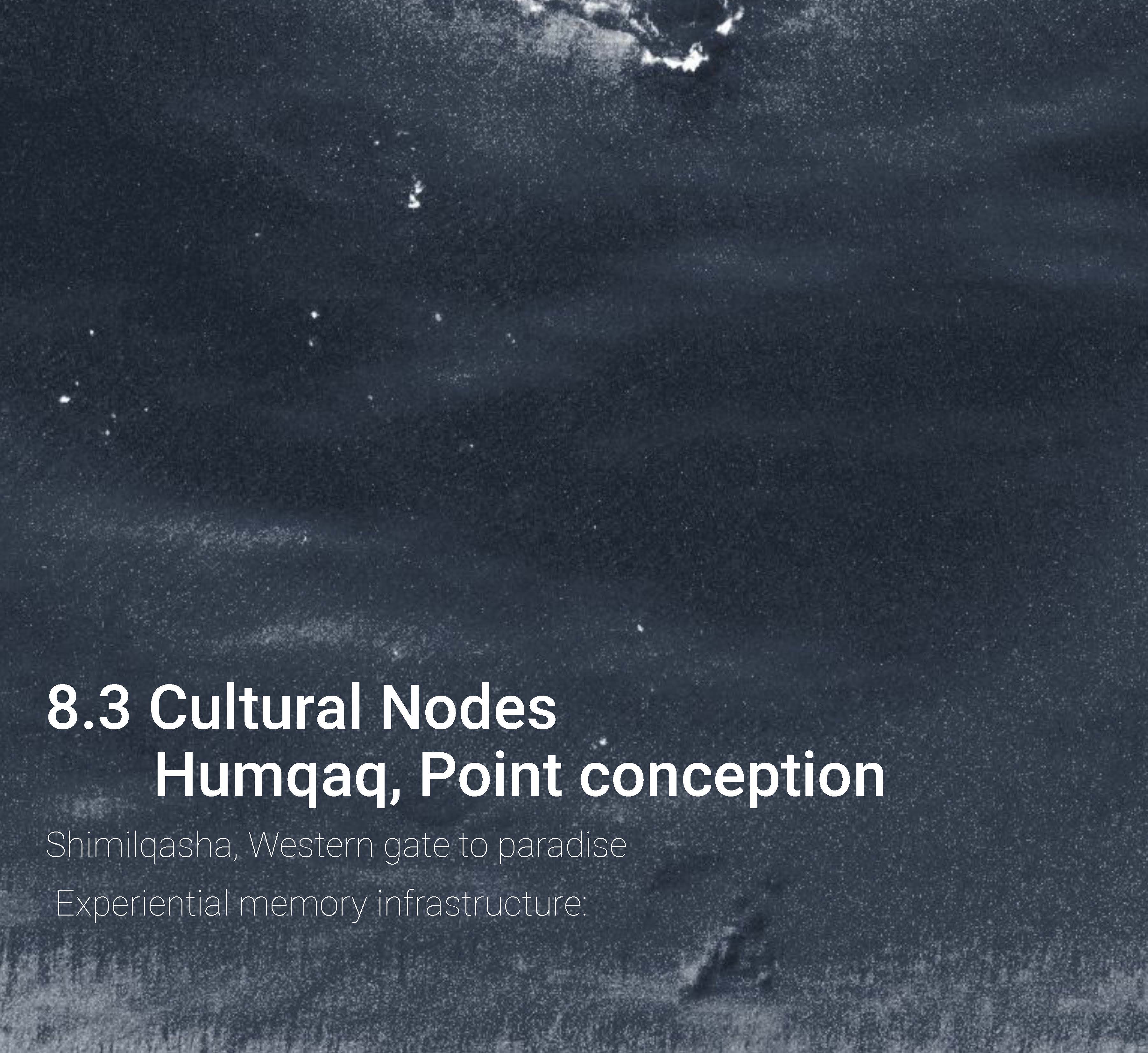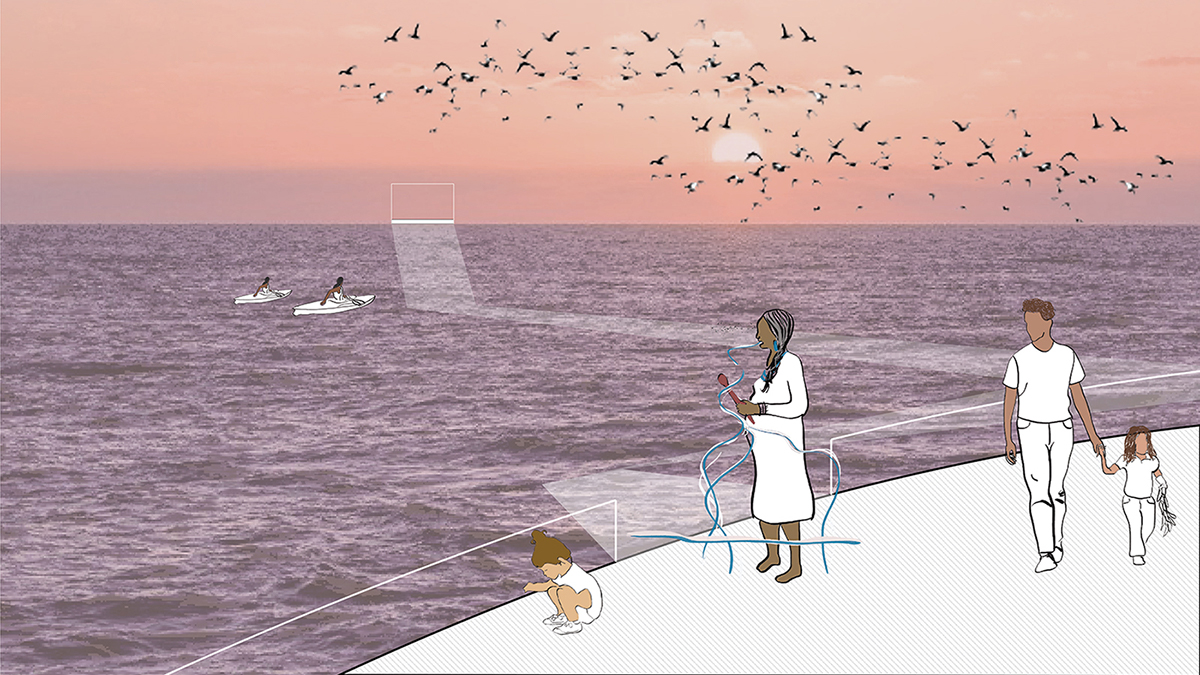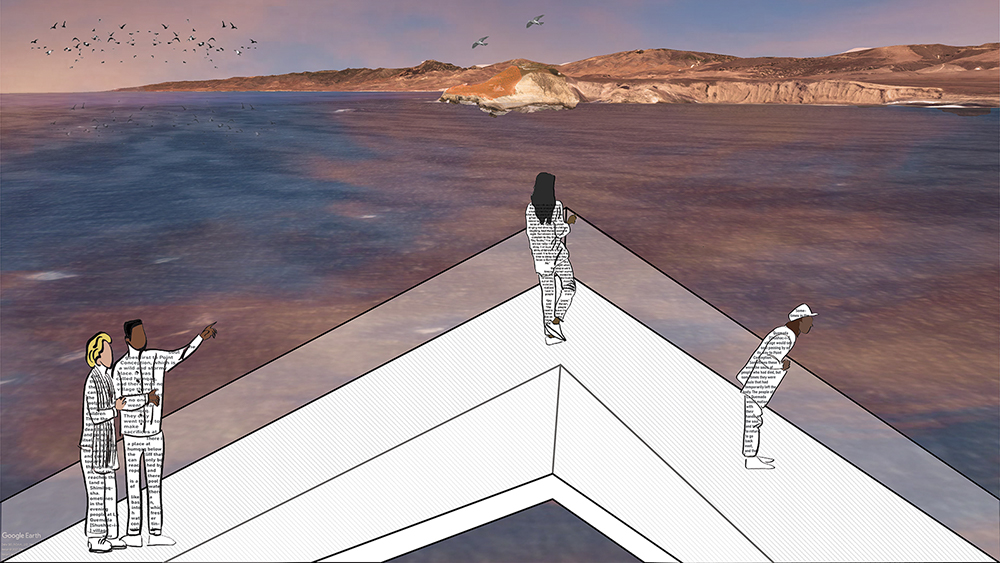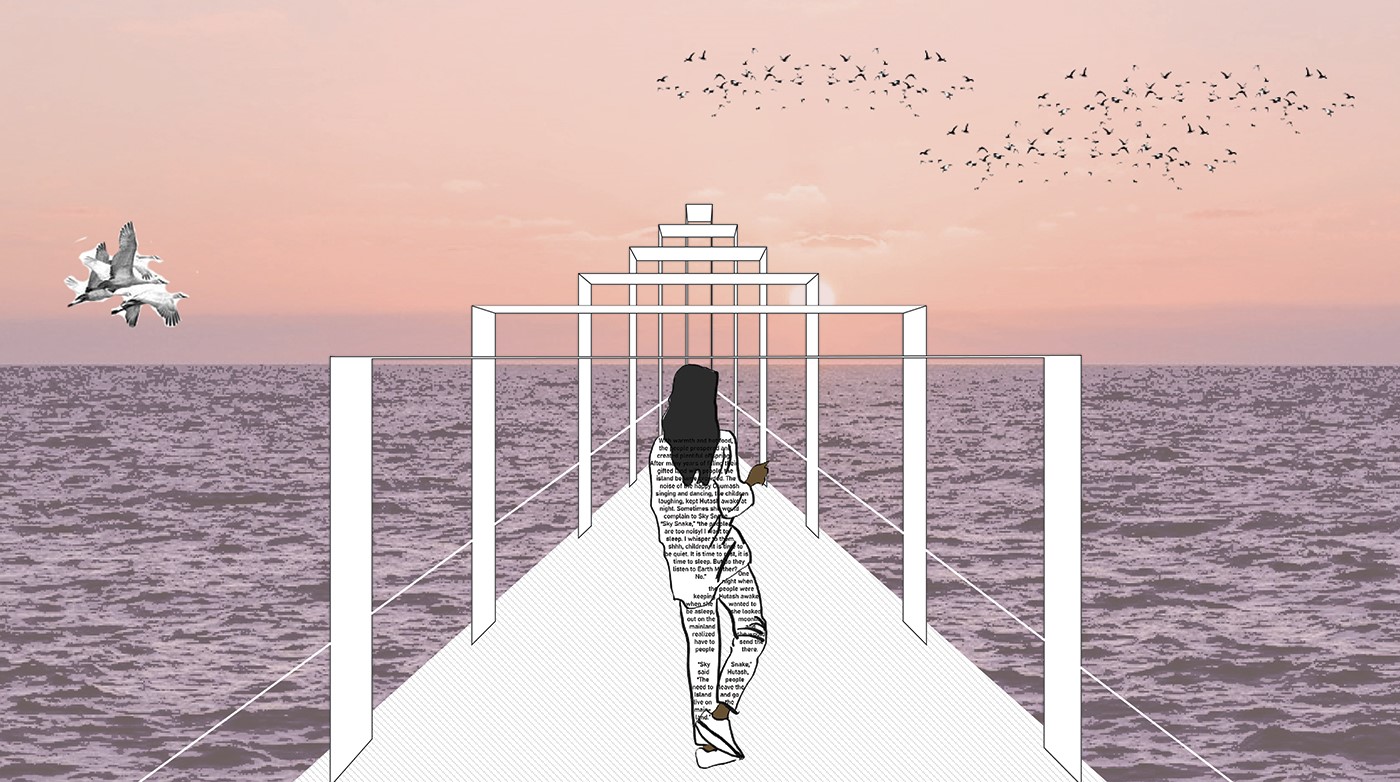On Sacred Waters/Grounds: Re-enacting Indigenous Ecologies and Practices
Investigating the ocean through a cultural lens was the main intention in the research component of the project. The project began at a global scale, studying the Inuit community of the Arctic and the Polynesian community of the Pacific and moved into a regional scale, studying the Chumash and the Tongva, two indigenous communities native to California.
To understand their cultural associations to water and the indigenous identities that stem from it, their folklore, community narratives, rituals, and practices were studied and translated into abstract fragments that relate to their specific landscapes/seascapes and stories. In this process, sacred sites emerged as surviving cultural anchors, holding great importance to their community.
From the stories we collected, the indigenous cultural practice of landscape embodiment became evident, their beliefs, practices, and rituals strongly anchored in their geographies. An inherent wisdom on stewardship and care emerges, one that speaks to the cycles of nature, understanding the importance of balance and living as one with the world. Our design intention attempts to reflect these ethos in its process.
The design component of the studio focused on using this research to develop an intervention within the Southern California Bight in a meeting point for 3 of the Chumash most sacred sites: Humqaq/ Point Conception, Limuw/ Santa Cruz Island and the Sunken Chumash Sacred Islands. An oceanic/cultural infrastructural system was designed to restore indigenous ancestral practices of sea-faring, wayfinding, and abalone wild harvesting as a way to re-enact the stories and narratives of the past. Inspired from the community’s deep connection and embodiment of nature, the design attempts to capture these forces and ephemerality and attempts to make the ecological processes and the cultural stories visible and at the forefront. The proposal acknowledges that in reality such a project should be developed in close association with the community themselves, making them leaders and stewards and establishes that an interdisciplinary approach sits at the heart of the proposal.
The intention in our design is to hold space for the resurfacing of sunken rituals and practices (abalone harvest, seafaring) and forefront and highlight indigenous people as leaders in the stewardship and care that is needed moving forward. By designing evidently people-made ecological support systems we can better visualize the existing ephemeral natural processes, re-connecting and re-involving people in the care needed; restoring the sacredness in all our relationships.
